The Ultimate Pacific Crest Trail Packing List
Your Pacific Crest Trail gear list can, at times, feel like one of your most defining features on the trail. It’s been a few years since my Pacific Crest Trail thru-hike, and I’ve since learned a great deal about what gear works well on a thru-hike and what gear is better left at home (or discarded altogether).
My gear list has undergone significant changes, especially since I first hiked the PCT. If I were to go back and talk to myself before I made my PCT packing list and went out to spend a small fortune on gear, I would advise myself to take the following. And don’t just take my word for it. If you want to learn more about the favorite, most popular, or most hated PCT gear used by Pacific Crest Trail thru-hikers, check out the PCT Hiker Survey Gear Guide.
If you would like to skip directly to a detailed description of each item, please click here.
The base weight of the gear included on this list (excluding worn clothing, small miscellaneous items such as cords, a toothbrush, or Ziplock bags, and consumable items like water, food, and insect repellent) is 15 lbs (6.8 kg). Note: This includes a 1 lb / 450 g battery pack, a 3.5 oz / 100 g satellite messenger, and a 7.6 oz / 215 g bear bag. All of these items are entirely optional for hikers, and the base weight without these items drops to 13.19 lbs / 5.98 kg. In the Sierra, a bear canister must also be carried. I’m always looking to try new gear and am curious to hear what everyone else has to say about their setups, so if you’ve got something to say, be sure to leave a comment or get in touch.
Remember, there is no “perfect PCT gear list”. My gear list differs hugely from that of my best hiking buddies. Ultimately, the best gear for the PCT is the gear that makes you the most comfortable and happiest. Make good decisions, friends.
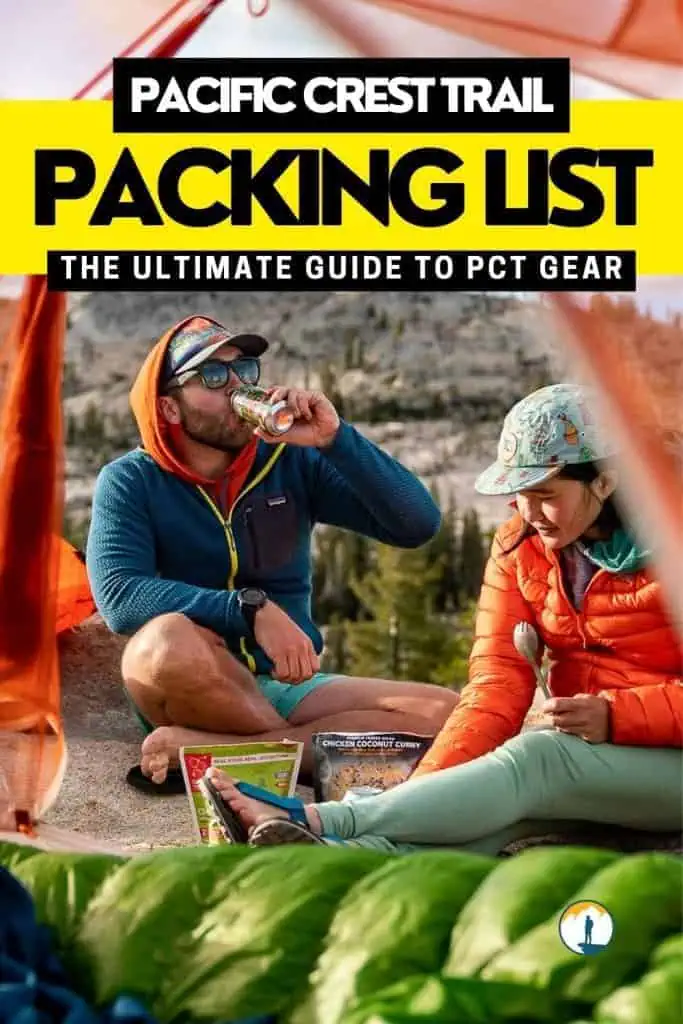
PCT Gear List at a Glance
Here’s a look at some of the big-ticket items on the PCT gear list that most hikers will need for a Pacific Crest Trail thru-hike.
- Backpack: ULA Circuit (41 oz / 1.162 kg)
- Shelter: Big Agnes Copper Spur HV UL2 (45 oz / 1.276 kg)
- Sleeping bag: Western Mountaineering UltraLite (28 oz / 822 g)
- Sleeping pad: Therm-a-Rest NeoAir XLite (12 oz / 340 g)
- Insulated jacket: Feathered Friends Eos – Men’s/Women’s (10.6 oz / 300 g)
- Rain jacket/shell: Zpacks Vertice – Men’s/Women’s (7 oz / 198 g)
- Top: Ridge Merino Solstice Hoodie – Men’s/Women’s (9 oz / 255 g)
- Shorts: Brooks Sherpa 2 in 1 Short 5in Inseam (3.9 oz / 111 g)
- Shoes: Altra Lone Peak – Men’s/Women’s (22 oz / 624 g)
- Socks: Darn Tough Hiker Quarter Midweight – Men’s/Women’s (2 oz / 57 g)
- Head net: Sea to Summit Head Net (1.2 oz / 34 g)
- Gloves: Patagonia R1 Daily Gloves (1.3 oz / 37 g)
- Rain Pants: Vertice Rain Pants – Men’s/Women’s (3.2 oz / 90 g)
- Base layer (top): Ridge Merino Aspect Midweight – Men’s/Women’s (8.3 oz / 235 g)
- Base layer (bottom): Ridge Merino Aspect Midweight – Men’s/Women’s (6.2 oz / 176 g)
- Gaiters: Altra Trail Gaiters (1.73 oz / 49 g)
- Headlamp: BioLite Headlamp 325
- Trekking Poles: Black Diamond Alpine Carbon Cork (17.1 oz / 485 g)
- Stove: MSR PocketRocket 2 (3 oz / 85 g)
- Pot: TOAKS Light Titanium 650ml (2.8 oz / 79 g)
- Water treatment: Sawyer Squeeze (3 oz / 85 g)
- Bear canister: BearVault BV500 (41 oz / 1.162 kg)
- Fanny pack: Thrupack Summit Bum
- Satellite messenger/PLB: Garmin inReach Mini 2 (3.5 oz / 100 g)
- Traction device: Kahtoola MICROspikes (11 oz / 312 g)
- Ice axe: C.A.M.P. USA Corsa Nanotech (8.9 oz / 252 g)
The Big Stuff
Backpack
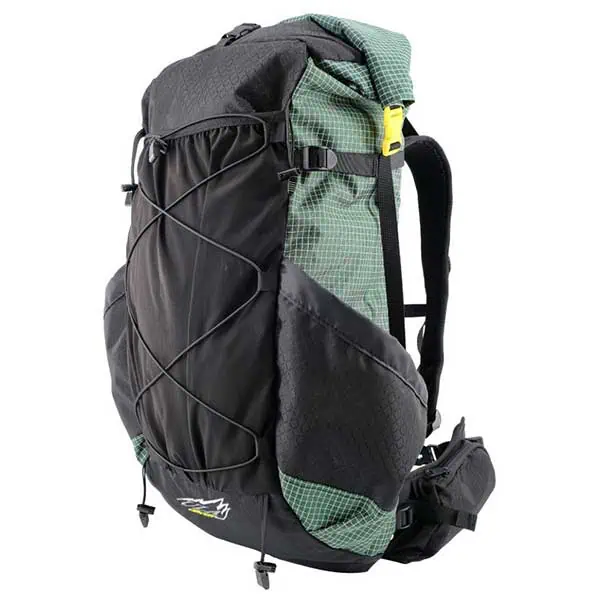
41 oz / 1.162 kg
Detailed View
Sleeping Bag
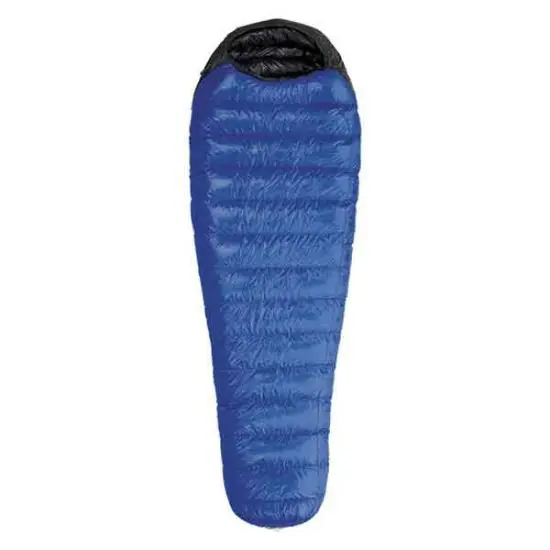
29 oz / 822 g
Detailed View
Sleeping Pad
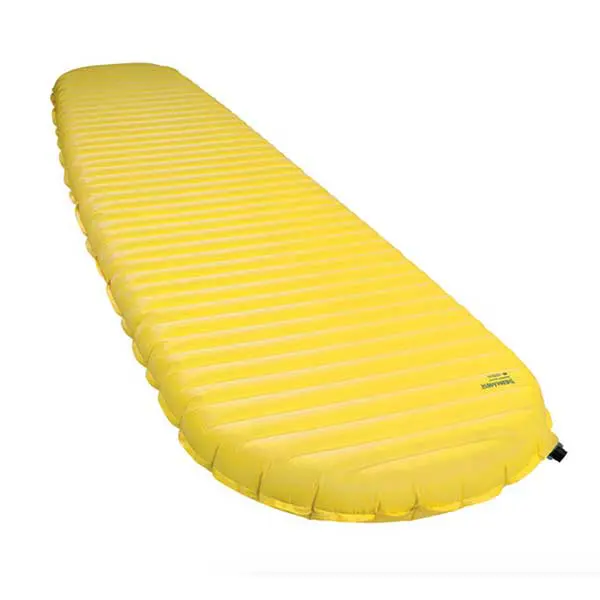
12 oz / 340 g
Detailed View
Clothing
Rain Jacket/Shell
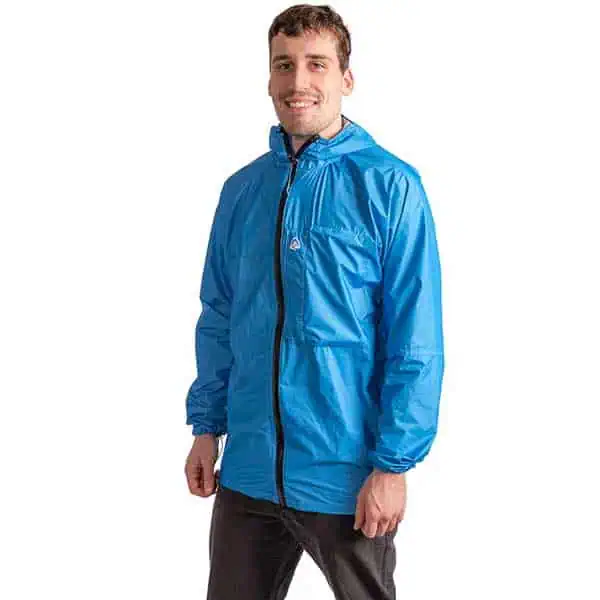
7 oz / 198 g
Detailed View
Top
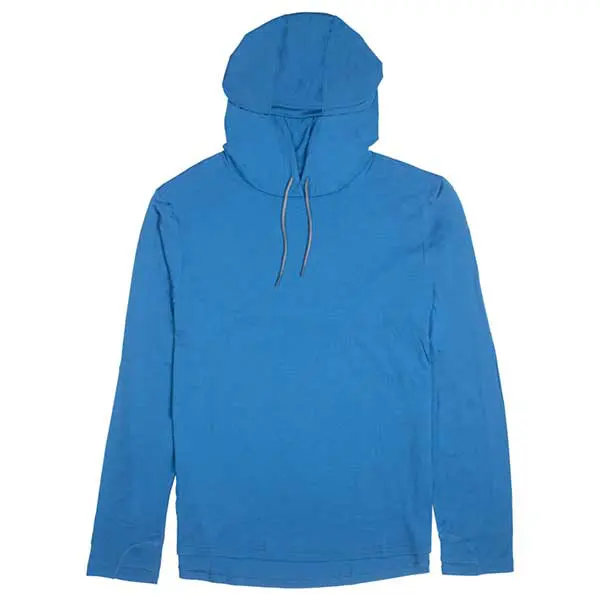
9 oz / 255 g
Detailed View
Shoes
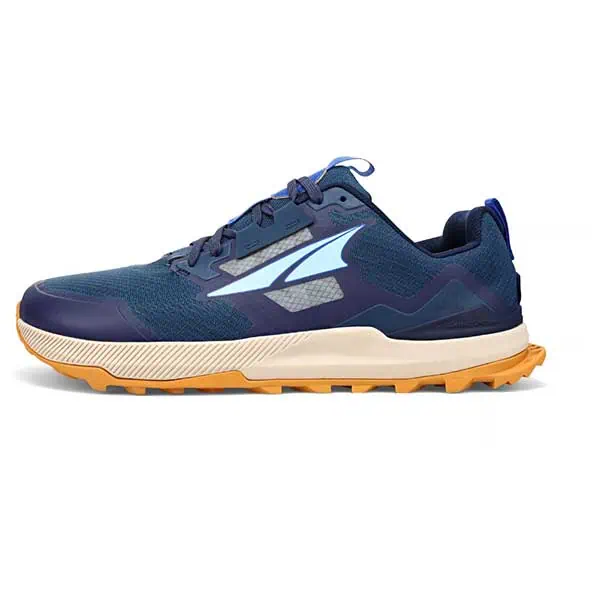
22 oz / 624 g (pair)
Detailed View
Socks

2 oz / 57 g (pair)
Detailed View
Gloves
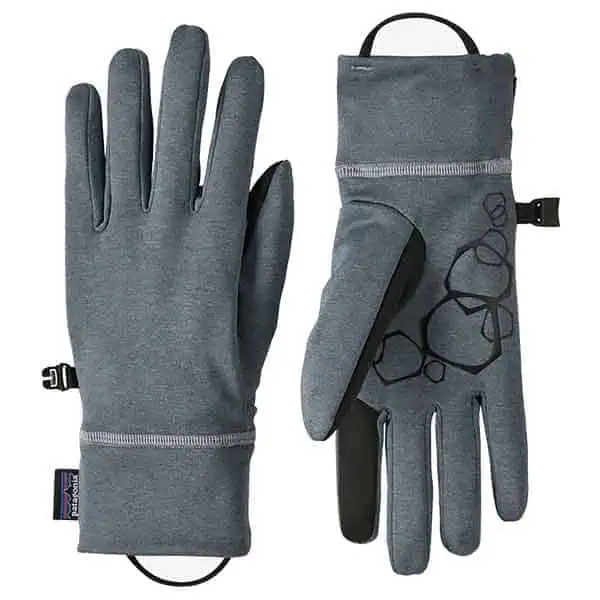
1.3 oz / 37 g (pair)
Detailed View
Rain Pants
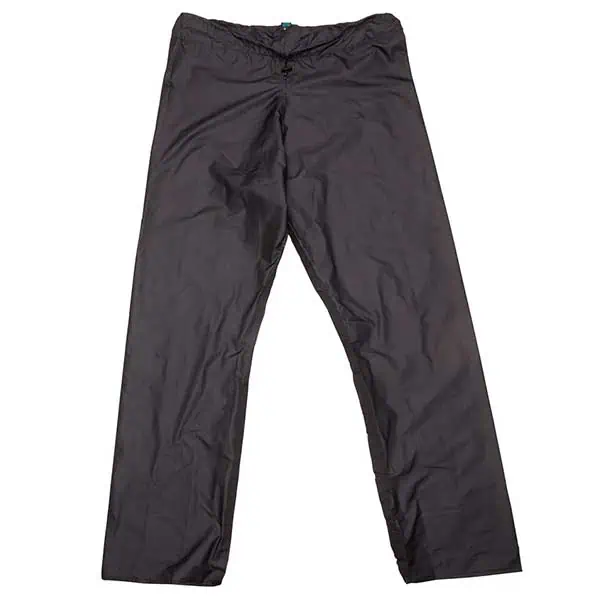
3.2 oz / 90 g
Detailed View
Base Layer (Bottom)
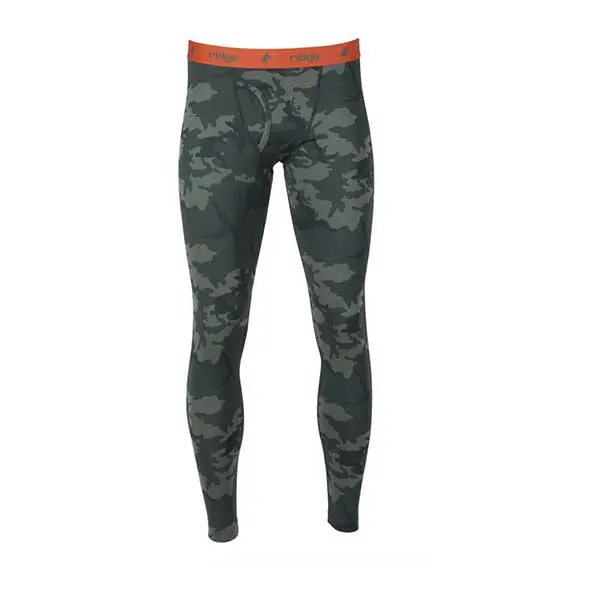
6.2 oz / 176 g
Detailed View
Neck Gaiter
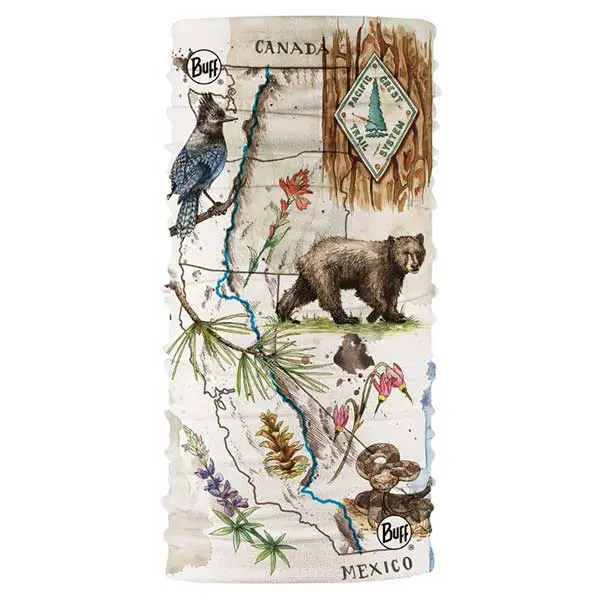
1.2 oz / 34 g
Detailed View
Warm Hat
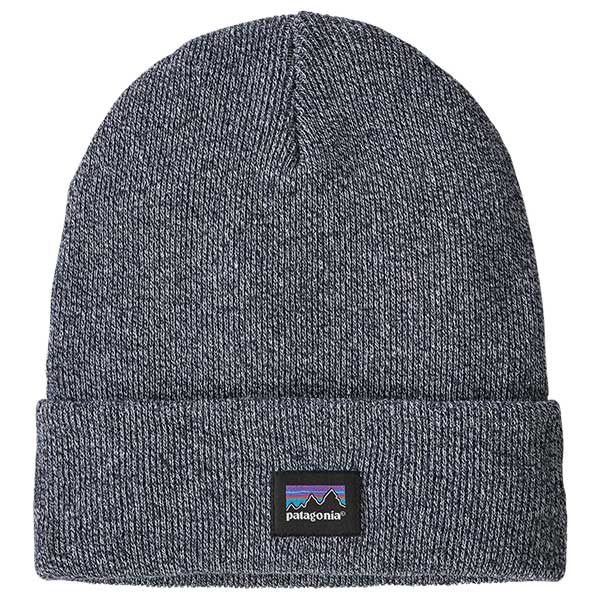
3.4 oz / 96 g
Detailed View
Hat
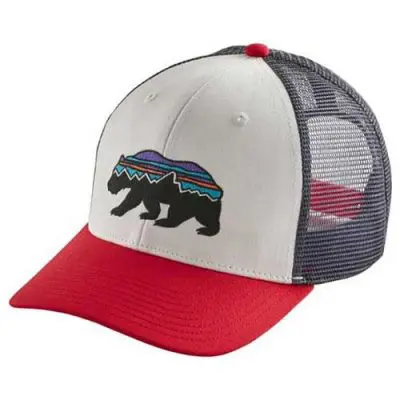
3.2 oz / 91 g
Detailed View
Sunglasses
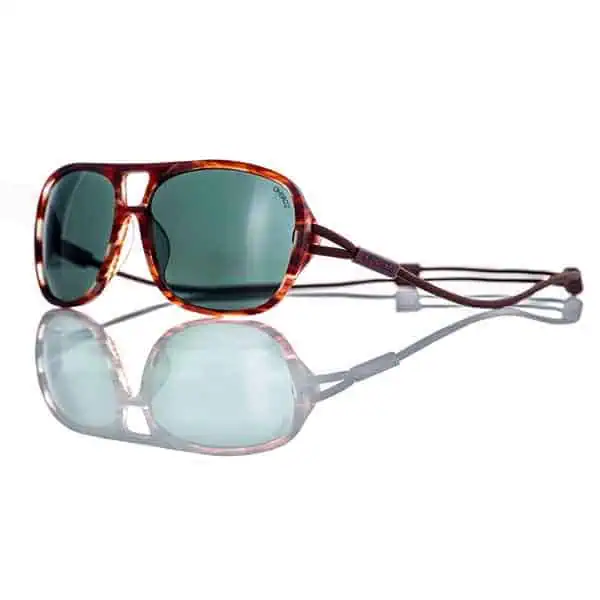
Detailed View
Sunglasses Retainer
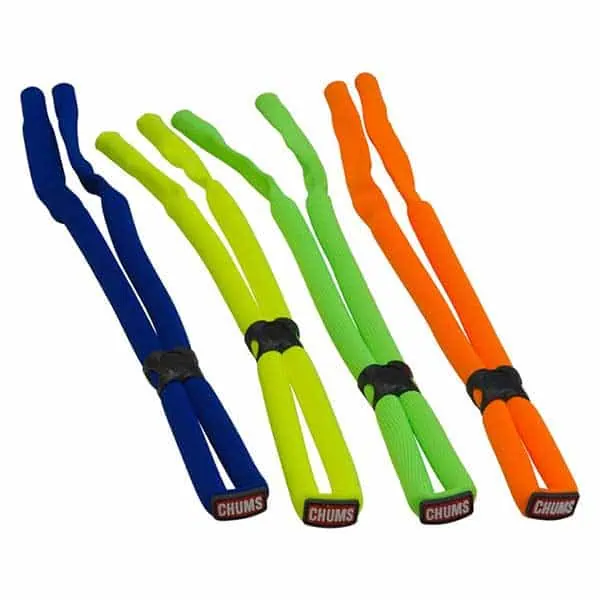
0.42 oz / 12 g
Detailed View
Camp Shoes
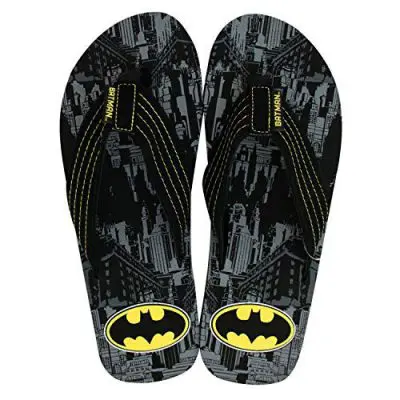
4.7 oz / 132 g
Detailed View
Carried/On Body
Trekking Poles
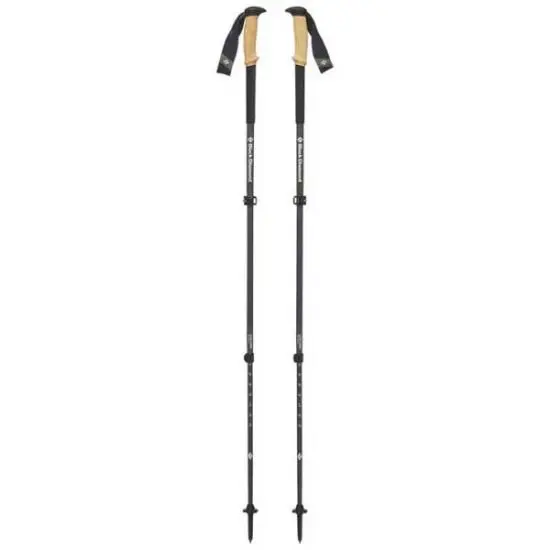
17.1 oz / 485 g
Detailed View
Fanny Pack
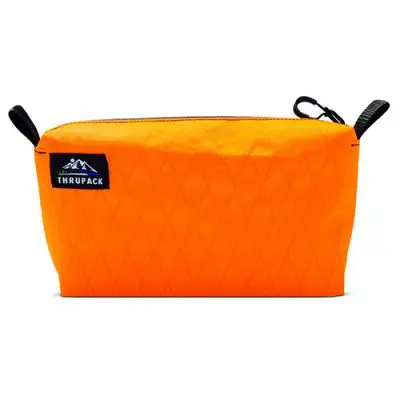
2.5 oz / 71 g
Detailed View
Fanny Pack Strap
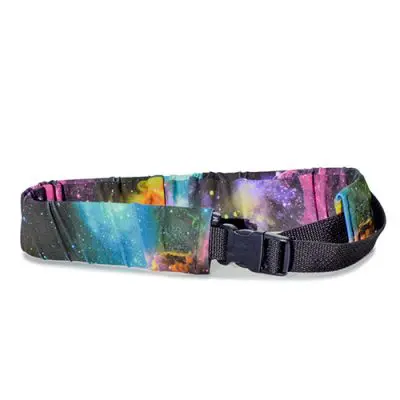
2.2 oz / 62 g
Detailed View
Backpacking Gear
Stove

3 oz / 85 g
Detailed View
Pot
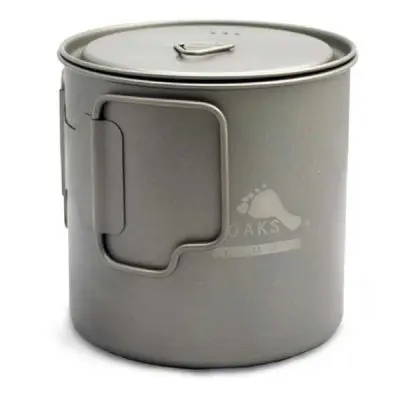
2.8 oz / 79 g
Detailed View
Water Treatment
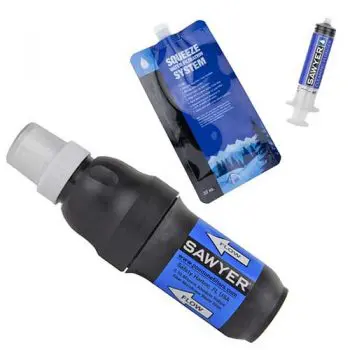
3 oz / 85 g
Detailed View
Headlamp
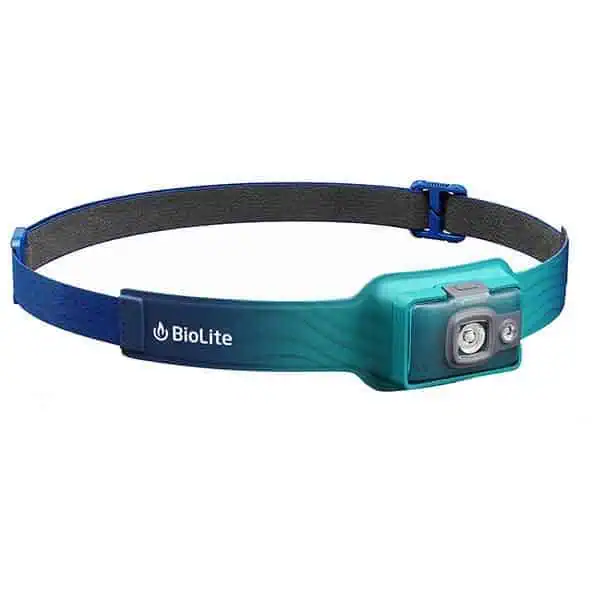
1.76 oz / 50 g
Detailed View
Pack Cover
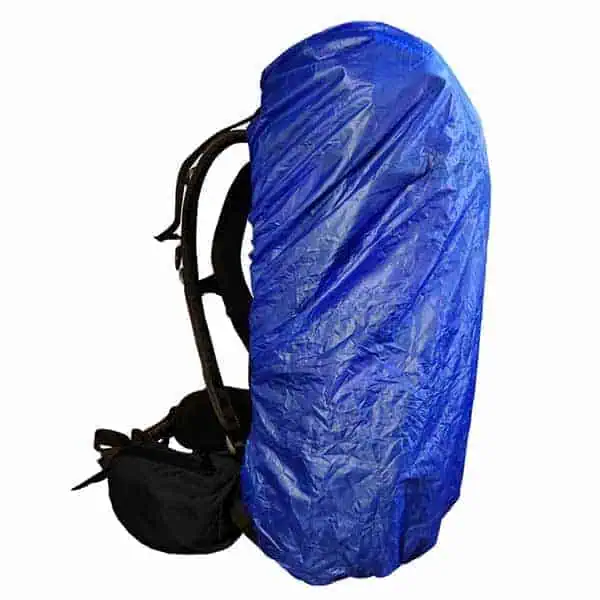
2.6 oz / 74 g
Detailed View
Food Storage (Outside Sierra)
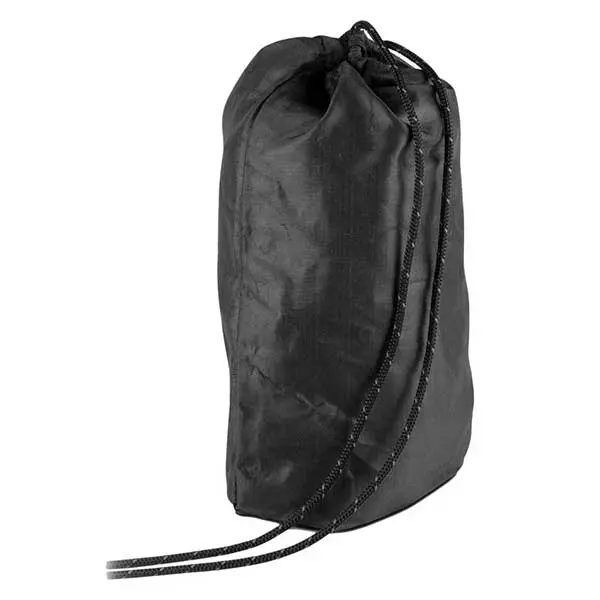
7.6 oz / 215 g
Detailed View
Bear Canister (Sierra)

41 oz / 1.162 kg
Detailed View
Satellite Messenger/PLB
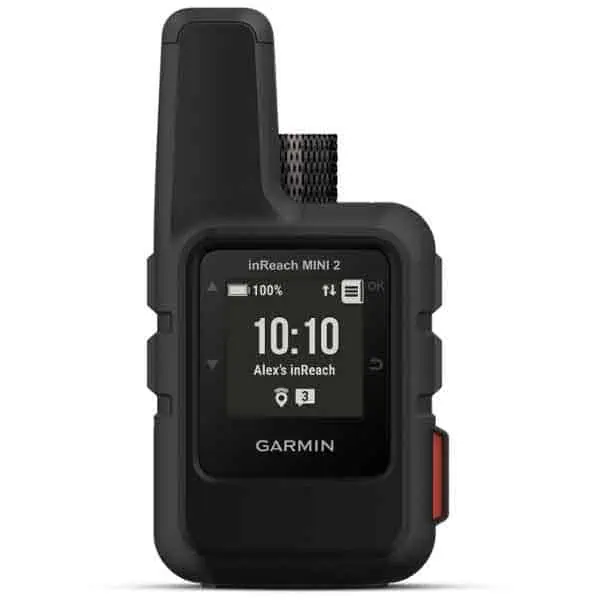
3.5 oz / 100 g
Detailed View
Stuff Sack (Sleeping Bag)
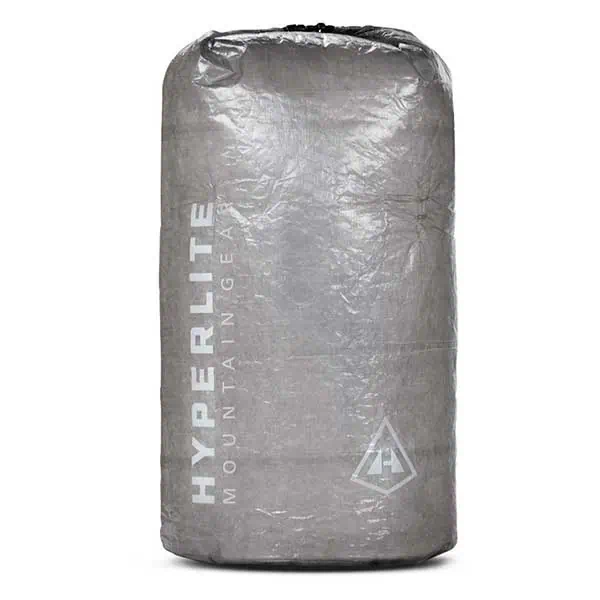
1.2 oz / 34 g
Detailed View
Utensil
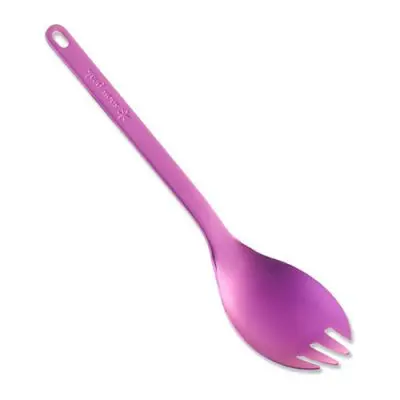
0.6 oz / 17 g
Detailed View
Tent Stakes
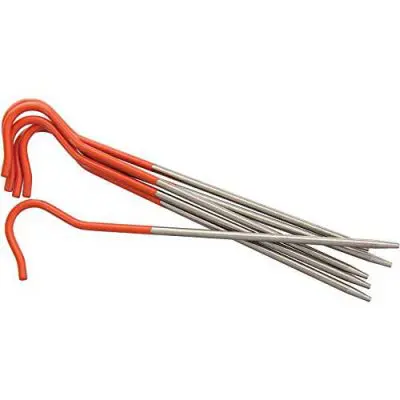
0.28 oz / 8 g (each)
Detailed View
Tent Stakes
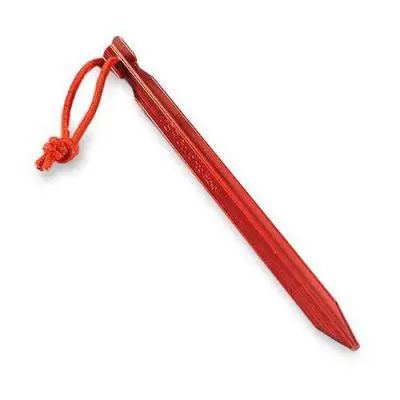
0.5 oz / 14 g (each)
Detailed View
Water Bottle
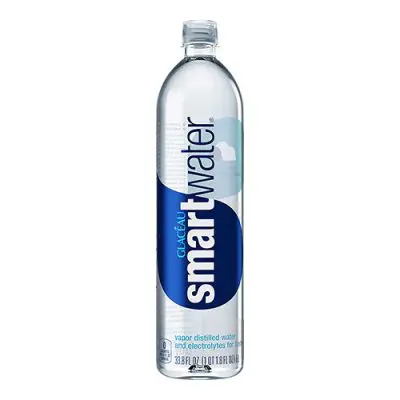
1.4 oz / 40 g
Detailed View
Massage Balls
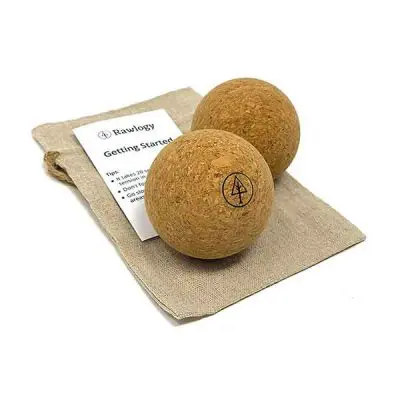
1.4 oz / 40 g
Detailed View
Gear Repair
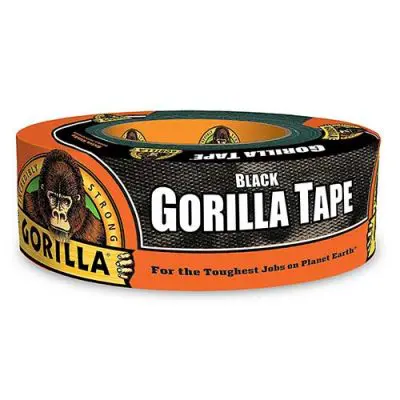
Detailed View
Bathroom
Trowel
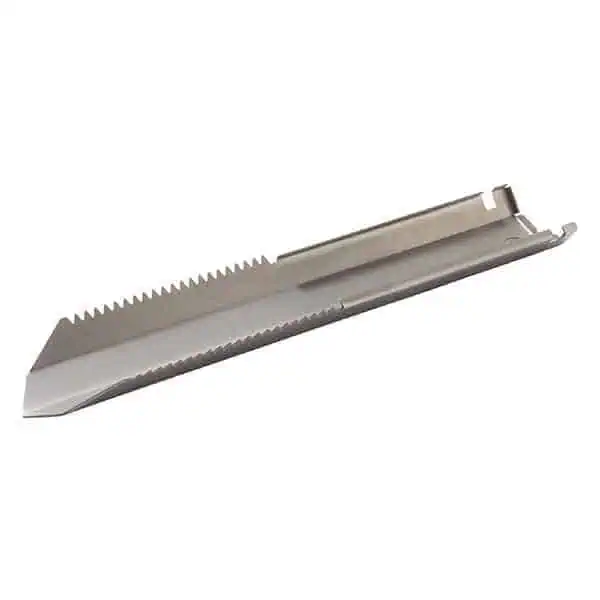
1.2 oz / 34 g
Detailed View
Pre-Trail Repellent
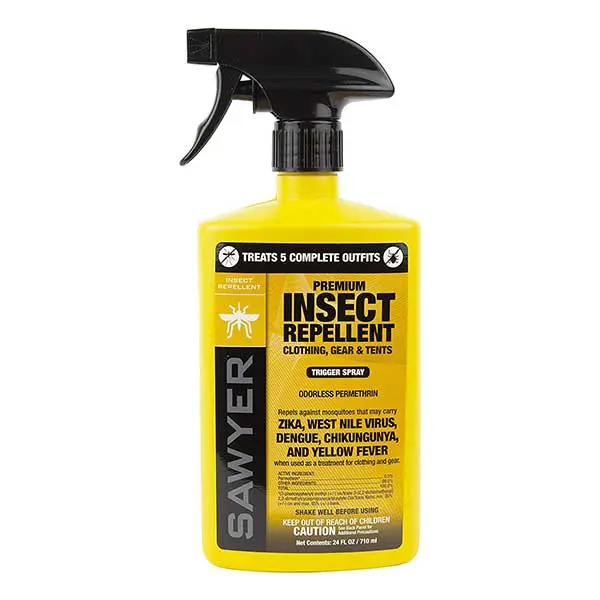
(not carried)
Detailed View
Anti-Chafe Balm
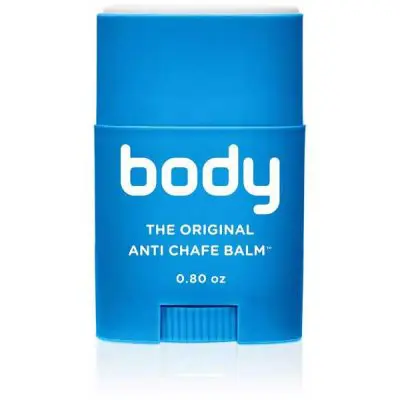
Detailed View
Anti-Blister Balm

Detailed View
Hand Sanitizer
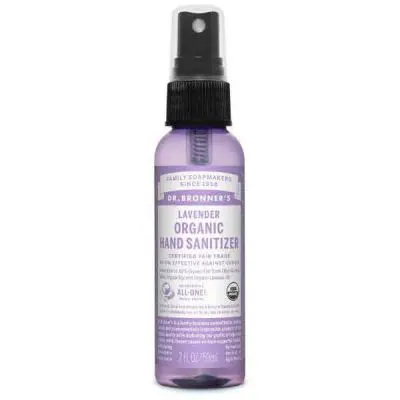
Detailed View
Lip Balm
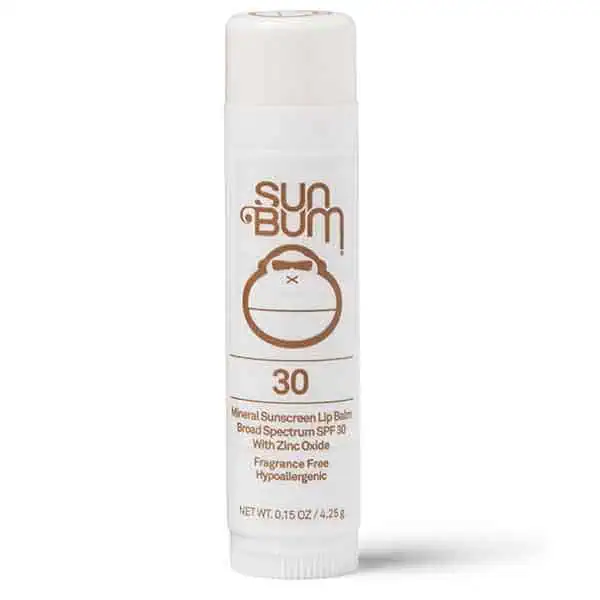
Detailed View
Sunscreen
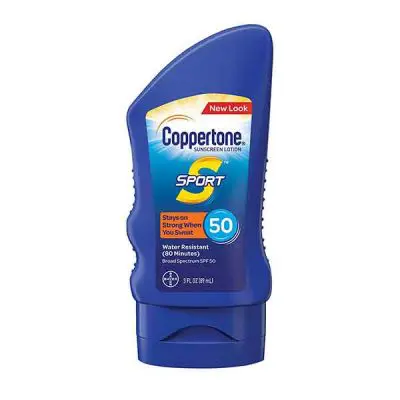
Detailed View
Toothbrush

0.8 oz / 23 g
Detailed View
Toothpaste
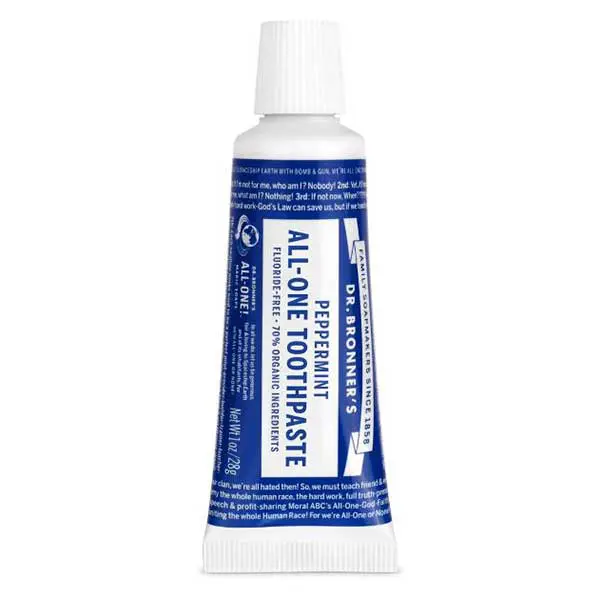
Detailed View
Toilet Paper
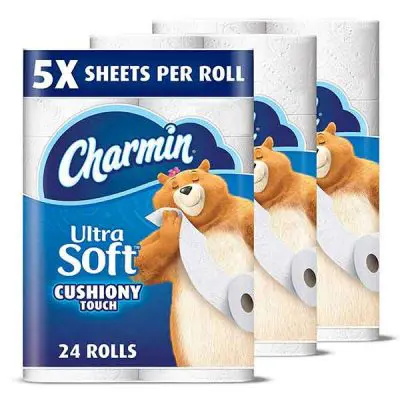
Detailed View
Electronics
Power Bank
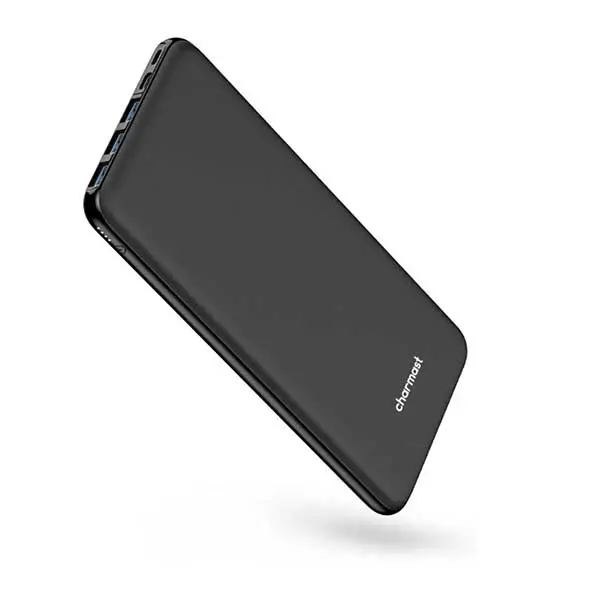
15 oz / 425 g
Detailed View
Headphones
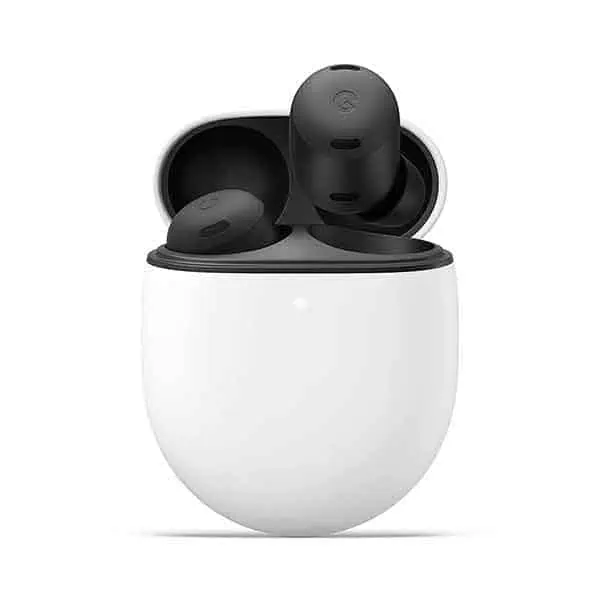
2.2 oz / 62 g
Detailed View
Phone Case
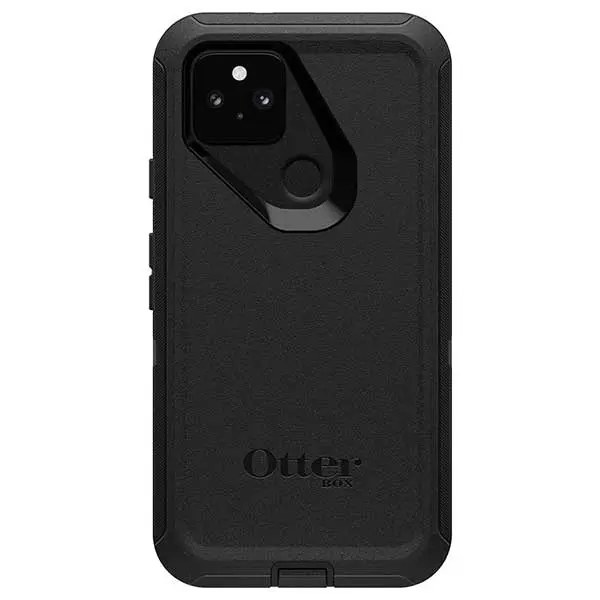
Detailed View
Wall Charger
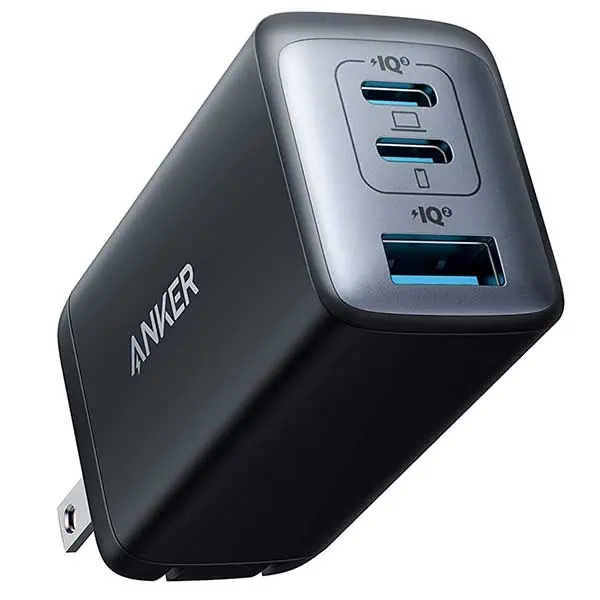
4.6 oz / 130 g
Detailed View
Camera Gear
Camera
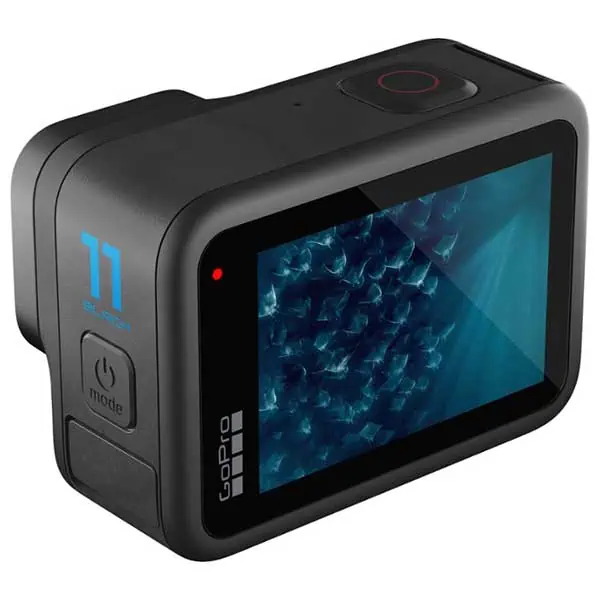
5.4 oz / 154 g
Detailed View
Camera Clip

3 oz / 85 g
Detailed View
Camera Cover
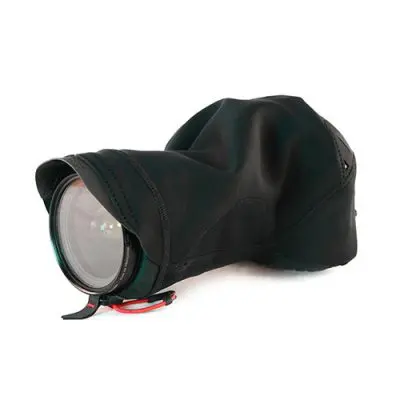
4 oz / 113 g
Detailed View
The Rest
- Rubber bands, assorted Ziploc bags, lighter, pen, Sharpie, dice (for Yahtzee!)
Detailed View
Backpack: ULA Circuit
The ULA Circuit is one of the most popular and best-reviewed packs for hiking the Pacific Crest Trail. It’s a 68-liter pack that easily fits the BV500 and other bear canisters with up to 35 pounds (16 kg) of gear. It has a 1.2 oz / 34 g carbon fiber and Delrin suspension hoop with an internal foam frame and a single aluminum stay for support and can be ordered with a 12″ to 18″ adjustable harness system. Best of all, it comes in green, black, red, orange, blue, teal, grey, or purple. I am also a huge fan of the multiple and very stretchy mesh pockets.
41 oz / 1.162 kg
Find out more
Other popular backpacks used by Pacific Crest Trail thru-hikers, according to the PCT Survey’s Gear Guide.
Shelter: Big Agnes Copper Spur HV UL2
It’s true, the Big Agnes Copper Spur HV UL2 is a two-person tent, but I would recommend you consider a two-person shelter (for a single person) unless you’re trying to make up for some weight you spent elsewhere in your pack (the one-person version or the Fly Creek HV UL1 are options). This shelter is freestanding (does not have to be staked down to set it up – but it helps), has two side-entry doors, and has two vestibules.
45 oz / 1.276 kg
Find out more
Other popular tents used by Pacific Crest Trail thru-hikers, according to the PCT Survey’s Gear Guide.
Sleeping Bag: Western Mountaineering UltraLite
When you hear about someone splurging on a sleeping bag, it’s probably a Western Mountaineering bag they ended up getting. The UltraLite is a 20°F / -9°C bag that will keep you warm (without a liner) no matter the conditions on the PCT (so long as you’re not a crazy winter thru-hiker). If you want something a bit warmer, check out the 10°F / -12°C Western Mountaineering Versalite instead.
29 oz / 822 g
Detailed review
Find out more
Other popular sleeping bags used by Pacific Crest Trail thru-hikers, according to the PCT Survey’s Gear Guide.
Sleeping Pad: Therm-a-Rest NeoAir XLite (Regular)
The Therm-a-Rest NeoAir Xlite from Cascade Designs is one of the lightest full-length sleeping pads on the market. It sports an impressive 3.2 R-value (that’s the insulation rating), and it packs up relatively small and doubles as a raft (or even a sled). The only problems are that it takes a while to inflate/deflate, and it can be noisy, so be considerate to your neighbors. Read my detailed Therm-a-Rest NeoAir Xlite review here.
12 oz / 340 g
Detailed review
Find out more
Other popular sleeping pads used by Pacific Crest Trail thru-hikers according to the PCT Survey’s Gear Guide.
Top: Ridge Merino Solstice Hoodie – Men’s/Women’s
Long sleeves and a hood are the way to go, and the Ridge Merino Solstice Hoodie is one of the only lightweight merino options still available to hikers. Why companies are killing off their lightweight merino hoodies, I don’t know. This hoodie gets it and has us covered (get it!? Because the long sleeves and the hood cover you? And “covered” also means like taken care of? AHAHAHAHAHA). This lightweight hoodie is, quick-drying, odor-resistant, breathable, and even has funky thumb loops. It keeps you cool in the sun and warm in the cold – what more could you ask for?
9 oz / 255 g
Detailed review
Find out more – Men’s/Women’s
Shorts: Brooks Sherpa 2 in 1 Shorts 5in Inseam
These shorts are sexy as hell. However, shorts can change a lot from person to person so these definitely aren’t for everyone. That being said, they’ve got a built-in brief liner (so you won’t need underwear with these) and they’ve got three stretch pockets and a zipper pocket. I can fit a large phone into the zippered pocket attached to the brief inside.
3.9 oz / 111 g
Find out more
Shell: Zpacks Vertice (Men’s/Women’s)
Although I hate the rain, a five-month hike along the Pacific Crest Trail is bound to have some days of shitty weather (I’m looking at you late-season Washington). The Zpacks Vertice is a lightweight shell that’s popular with PCT hikers. It has a chest pocket, adjustable cuffs, and pit zips.
7 oz / 198 g
Find out more (Men’s/Women’s)
Insulated Jacked: Feathered Friends Eos Down Jacket (Men’s/Women’s)
This is not the down jacket I have, but this is certainly the down jacket I want (and the one I would bring on the PCT if it magically appeared in front of me). The Feathered Friends Eos Down Jacket has a full-length zipper, two hand-warmer pockets, a hood, an adjustable hem (that’s the waist), and lycra around the cuffs and hood. It’s filled with ethically-sourced 900+ fill power goose down and is made in Seattle, Washington (in case there’s another Seattle I don’t know about). The shell is made with Pertex Quantum (with DWR) and the fill weight (that’s the weight of all the feathers inside) is 3.7 oz / 105 g.
10.6 oz / 300 g
Detailed review
Find out more (Men’s/Women’s)
Shoes: Altra Lone Peak (Men’s/Women’s)
Personally, I prefer the HOKA ONE ONE Speedgoat or Moab Ventilators (because they come in wide sizes), but most thru-hikers wear Altra Lone Peaks on the trail. What? No hiking boots? That’s right, no hiking boots. Boots are generally considered far too heavy and not breathable enough for long-distance days. Also, they take far longer to dry when you inevitably get them wet. Remember that you can order shoes online and have them shipped ahead to yourself somewhere on the trail instead of having to buy them all ahead of time (good if you end up needing the change shoes or sizes). Note: buy whatever shoes are most comfortable for you – everyone is different.
10.5 oz / 298 g (each)
Find out more (Men’s/Women’s)
Other popular shoes used by Pacific Crest Trail thru-hikers, according to the PCT Survey’s Gear Guide.
Socks: Darn Tough 1/4 Hiking Socks (Men’s/Women’s)
By the end of the PCT, nearly everyone was wearing Darn Tough 1/4 Hiking Socks. They’re comfortable, made with merino wool, have a lifetime guarantee, and offer great cushion. You will never want to buy another brand of socks. I buy these as presents all the time because you know why? Because they’re awesome. There’s no better feeling on the trail than a new pair of socks.
2.2 oz / 62 g (pair)
Detailed review
Find out more
Head Net: Sea to Summit Head Net
You guys, I know that wearing a head net makes you look like a complete tool (and if this is how you had to find out, I am sorry). However, when you’re trudging through mosquito country (and trust me, if you’re hiking the PCT you will come to know this country well), you are not going to care about how dumb you look – only how many mosquitoes are not currently in and/or on your face. The Sea to Summit Head Net is a lightweight solution with an adjustable hem that you should probably bring an extra one of because you’ll be able to sell it for ten times the price to some sucker caught out without one.
1.2 oz / 34 g
Find out more
Gloves: Patagonia R1 Daily Gloves
Gloves, as with tights, are a necessary part of my early-morning backpacking kit. Patagonia R1 Daily Gloves are lightweight enough that I can stand to wear them for an extended period without my hands getting too hot (I run hot). They do a decent job of blocking moderate wind but aren’t great for rain. They do (at least for now) work well with my phone’s screen.
1.3 oz / 37 g
Find out more
Rain Pants: Vertice Rain Pants (Men’s/Women’s)
Rain pants are not considered an essential item by all hikers. That said, if you do decide to bring rain pants, the counterpart to the Zpacks rain jacket, Vertice Rain Pants, are a solid choice. They weigh just 3.2 oz / 90 g and they have wide ankles that will fit over most shoes. Rain pants are also great for the dewy morning hours when you might find yourself hiking through wet and overgrown brush.
3.2 oz / 90 g
Find out more (Men’s/Women’s)
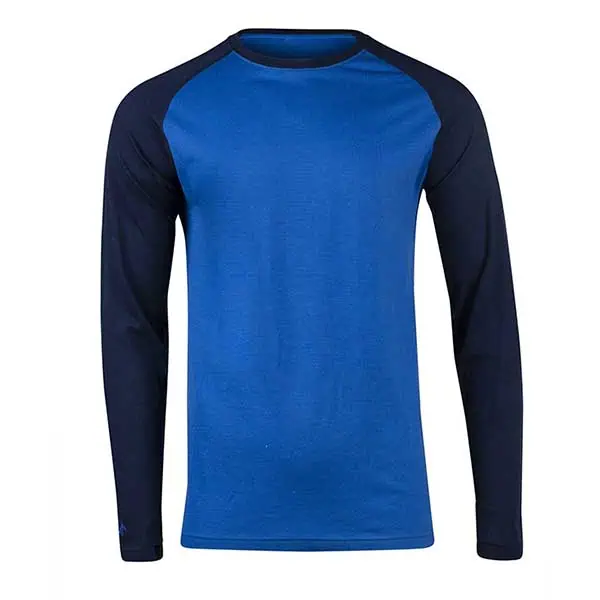
Base Layer (Top): Ridge Merino Aspect Midweight – Men’s/Women’s
Personally, when I’m on the PCT during the “normal” hiking season, I don’t bring a base layer, but plenty of hikers do. Some people hike in them, some sleep in them, some wear them around town, and others do all of the above. I have become a big fan of Ridge Merino and their Ridge Merino Aspect Midweight is a great option.
8.3 oz / 235 g
Find out more – Men’s/Women’s
Base Layer (Bottom): Ridge Merino Aspect Midweight – Men’s/Women’s
I love both my shorts and waking up and hiking early. However, some mornings those early-morning chills are sometimes at odds with my shorts and so leggings become a nice thing to have. How do I put these on and take them off when I use shorts with a liner? Get naked, obviously. As with the top base layer, it’s not something I would generally carry on the PCT, but I’m not everyone. If you’re looking for. a solid (and not overpriced) base layer, then I encourage you to check these out.
6.2 oz / 176 g
Find out more – Men’s/Women’s
Neck Gaiter: Buff CoolNet UV+
I use the polar buff as a beanie, but I use a Buff CoolNet UV+ on my neck/head/face/wrist during the mornings/evenings/cold parts of the day when the polar would be too warm. This buff is designed to be used in the sun and apparently doesn’t heat up as much as an original buff, but I have trouble keeping it on an entire day (I run hot). And if you’re looking for something to make you look like a bag, then check out the PCT buff.
1.2 oz / 34 g
Find out more
Neck Gaiter: Polar Buff
If you don’t own a buff, then don’t be like me and resist buying one for way too long. They’re great. The polar buff is the original buff, but with 9 in / 22.8 cm of fleece at the end making it a bit warmer and more versatile. If you stuff your down jacket (or extra clothes) inside it at night, it also makes a great pillowcase. If you’re looking for something more simple, check out the original buff.
2.29 oz / 65 g
Find out more
Beanie: Patagonia Everyday Beanie
Personally, I’ve started using a polar buff instead of a beanie (also included on this gear list), but there’s nothing wrong with preferring a beanie; I won’t judge you. The Patagonia Everyday Beanie is a comfortable, lightweight choice for a beanie. That said, there are plenty of beanies out there. Wear/bring whatever works for you.
3.4 oz / 96 g
Find out more
Hat: Patagonia Fitz Roy Trucker Hat
This is a hat. I have this hat. I like this hat. That said, hats are hats. This is less a suggestion of what the “best” hat is (although I really do like this hat and you can also get it with either a bison or a fish), and more a reminder that you need a hat. Some people will be wearing full-brim hats, some will be wearing silly hats that have a built-in shade mullet, some hiker bros will be wearing visors, and some people might not have any hat at all. Wear whatever hat you want – just wear a hat. And if you’re not keen on wearing a hat, I would suggest that you reconsider this for the desert (either that, or bring an umbrella).
3 oz / 85 g
Find out more
Gaiters: Altra Trail Gaiters
If you’ve never used gaiters before or are at all confused by what they’re for or what they do, let me be the first to inform you that they are definitely something you should try out. They basically serve to keep rocks, dirt, poop, etc. out of your shoes while hiking. It might not sound like a big deal, but if you’re stopping once an hour, every hour, for five months to empty shit out of your shoe, that time adds us. It also helps prevent blisters (no more having to just ignore that little rock) and they keep your socks much cleaner. If you use Altras (shoes), you should have Altra Trail Gaiters; if you don’t, check these out instead.
1.73 oz / 49 g
Find out more
Sunglasses: Ombraz
As was the case with the hat, sunglasses are a personal choice. However, if you’re looking for a company that offers revolutionary armless sunglasses, Ombraz armless sunglasses are a great option. You’ll probably want to wear sunglasses for the desert sun, the hiking at altitude, and (if you’re lucky) the snow. Polarized sunglasses are best, and if you’ve never owned a pair, let the PCT be your excuse to treat yourself to a pair.
Sunglasses Retainer: Chums Original Cotton
If you’re not getting yourself a pair of Ombraz, you’re going to want to at least get yourself a pair of Chums. I guess the official name for this thing is an “eyewear retainer”, but we all know that just makes it sound even lamer than it already is. But I ask you, friend, to look past your judgments as to the coolness of eyewear retainers and accept that in the context of a thru-hike, they are incredibly useful. I have tried a couple of different eyewear retainers and have found this one to be the most durable (if you use one of the ones with prints on a piece of neoprene, the print will fall off eventually). Just don’t lose it in the wash and you’ll be fine.
0.6 oz / 17 g
Find out more

Camp Shoes: Batman Sandals
Camp shoes are not an essential piece of gear. However, I’ve tried thru-hiking without camp shoes and the amount of utility and happiness in having something easy to wear around camp or in town far outweighs the cost of carrying the extra weight. I found these Batman Sandals at a Walmart on the CDT and have had them for almost two years now. Camp shoes do not need to be fancy. Just get something cheap, light, and somewhat durable (you probably want something that won’t disintegrate if it gets wet).
6 oz / 170 g
Trekking Poles: Black Diamond Alpine Carbon Cork
Not everyone uses trekking poles (though a majority of thru-hikers do), and I have been back and forth on using them for a while now (I’m currently in a “not using” phase). If you fall into the “using” camp, Black Diamond Alpine Carbon Cork poles are an excellent option for a thru-hike. They are lightweight carbon poles with cork grips and collapse down to 24 in / 61 cm. They use an external lock to adjust, which I’ve found to be preferable to the poles you need to twist to adjust (not a good description, I know, but if you’ve used poles like these, you know what I’m talking about).
17.1 oz / 485 g
Find out more
Other popular trekking poles used by Pacific Crest Trail thru-hikers, according to the PCT Survey’s Gear Guide.
Fanny Pack: Thrupack Summit Bum
Now that I’m getting further down on this list, there are a lot of things that thru-hikers use that wouldn’t be very cool in everyday life outside the context of hiking. Add the Thrupack Summit Bum to that list (although I shamelessly use it off the trail and receive nothing but complimentary stares from everyone). This lightweight fanny pack has revolutionized my hiking experience and is now where I keep all my essentials for the day, including snacks, sunscreen, hand sanitizer, a lighter, and more. It features an exterior pocket that accommodates a large cell phone, two interior pockets, and is water-resistant. Not to mention its enormous sex appeal.
2.5 oz / 71 g
Detailed review
Find out more
Strap: Thrupack Comfy Strap
The Thrupack Summit Bum comes with a strap, but if you want an upgrade on both your comfort and your awesomeness, then a Comfy Strap is well worth the investment. This strap comes in a variety of prints, but most importantly it is stretchy (and comfy). It’s totally not necessary, but I am happy I have one.
2.2 oz / 62 g
Find out more
Stove: MSR PocketRocket 2
I’ve been back and forth on bringing a stove or not on thru-hikes, but I think the best idea (unless you are already 100% certain you don’t want a stove) is to bring one and then send it home if your relationship with hot food and water doesn’t work out. The MSR PocketRocket 2 is a lightweight and compact canister stove designed for use in the backcountry. The average boil time for one liter of water is 3.5 minutes, and it requires no priming, preheating, or pressurizing.
3 oz / 85 g
Detailed review
Find out more
Other popular stoves used by Pacific Crest Trail thru-hikers according to the PCT Survey’s Gear Guide.

Pot: TOAKS Light Titanium 650ml Pot
If you’re using a stove like the MSR PocketRocket 2 (and not something like the Jetboil Flash), then you’re going to need to get yourself a pot (unless your stove is just for making the fire). The TOAKS Light Titanium 650ml Pot is large enough for a single person to prepare everything from delicious ramen to mac and cheese to instant mashed potatoes. You can also fit both a small gas canister and a stove inside the pot. It comes with a small stuff sack, but I prefer just to use a rubber band to keep the lid while it’s packed.
2.8 oz / 79.4 g
Find out more
Water Treatment: Sawyer Squeeze
Although I’m not 100% sold on any filtration system, I would bring the Sawyer Squeeze along on a PCT thru-hike. Yes, it can be annoying to use if you don’t maintain it, but it’s reliable, versatile, and lightweight. I used one of these on the Continental Divide Trail and while hiking in both Tasmania and New Zealand. They are reliable so long as you clean them regularly and do not let them freeze. There’s also the Sawyer Micro which doesn’t really make up for its weight savings on a long-distance hike – stick with the original.
3 oz / 85 g
Detailed review
Find out more
Other popular water filters used by Pacific Crest Trail thru-hikers, according to the PCT Survey’s Gear Guide.
Headlamp: BioLite HeadLamp 325
BioLite recently upgraded its headlamp lineup, and I’m a fan of the BioLite HeadLamp 325 (the replacement for the HeadLamp 200). If you need something a bit brighter, there’s also the BioLite HeadLamp 425. For even more light, there’s the BioLite HeadLamp 800 Pro – this is what I used for my ultramarathon and it burned bright all night long. The only downside? It’s still a micro USB plug. Where’s the USB-C, BioLite?
1.76 oz / 50 g
Find out more

Food Storage: Ursack Major Bear Bag
A bear bag is not required, nor is it necessary, on the Pacific Crest Trail, but I like using one because it gives me peace of mind when storing my food. I use the Ursack Major Bear Bag more as a measure against rodents than I do bears, but it’s nice to know that bears won’t be able to get at my food either (because there are bears on the PCT outside the areas you’re required to carry a bear canister). This bag holds 10.7 L and comes in white or black. I would get a black one because the white one gets incredibly dirty. If you’re not into carrying a heavy hear bag to store your food, just use a lightweight stuff sack for your food (or just pour it loosely into your backpack around all your other gear).
7.6 oz / 215 g
Find out more
Bear Canister: BearVault BV500
The one piece of gear that every thru-hiker wishes they didn’t need to carry, the bear canister, is a requirement for hiking in the Sierra (or if camping in Lassen National Park). I own, use, and would bring the BearVault BV500 with me on another PCT thru-hike. It has an 11.5-liter (700 cu. in.) capacity and doubles as an excellent stool (perhaps its most redeeming quality). Plus, it stops the bears. It requires you to push down two tabs while turning the lid (one after another) to open and does not require any tools (although it can be more difficult if it’s cold and your fingers are frozen. If you plan to take less food or expect shorter intervals between resupplies, then consider getting the BV450 instead.
41 oz / 1.162 kg
Find out more | Detailed review
Other popular bear canisters used by Pacific Crest Trail thru-hikers, according to the PCT Survey’s Gear Guide.
Satellite Messenger/PLB: Garmin inReach Mini 2
If you want to bring a Personal Locator Beacon (PLB) that’s going actually to get you found, then you want something like the Garmin inReach Mini 2. This has become almost the default thru-hiking PLB as it’s lightweight, offers two-way texting (in addition to SOS and weather functions), and also tracking. It requires a subscription to use (even if you don’t intend to use it for texting) which can be purchased on a month-to-month or annual plan. And in case you’re wondering, “What about the Spot?” The Spot is an average device with subpar customer service and questionable reliability.
3.5 oz / 99 g
Find out more
Stuff Sack (Sleeping Bag): Hyperlite Mountain Gear Roll-top
Even if you have a waterproof backpack, a pack cover, and/or a pack liner it’s probably a good idea to keep your sleeping bag in a dry sack (because your sleeping bag very often literally keeps you alive at night). A Hyperlite Mountain Gear Roll-top will do the trick. These stuff sacks are incredibly lightweight. They are not designed for submersion, but using one inside of your pack will keep your sleeping bag dry. These stuff sacks have roll tops and come in four different sizes (food bag, anyone?).
Stakes: Vargo Ti Shepherds Hook Stakes
These are tent stakes. These stakes are made from titanium, are lightweight, and have orange heads to make them easier to find when stuck in the ground. Having titanium tent stakes will not make your hike any better or more successful. They are just tent stakes. You aren’t on a mountaineering expedition. You’re hiking the PCT. You should probably just use the tent stakes that come with your tent. That said, if you want to spend more on some fancy tent stakes, these are nice.
0.28 oz / 8 g (each)
Find out more
Stakes: MSR Groundhog Stakes
That’s right, after all that business about tent stakes being tent stakes, here I am with more tent stakes. If you are looking for something a bit more heavy-duty than the Vargo Ti Shepherds Hook Stakes, take a look at MSR Groundhog Stakes. There is also a ‘mini’ version available, but I found those to be too small to be reliable in loose ground.
0.5 oz / 14 g (each)
Find out more
Utensil: Snow Peak Titanium Spork
Sure, you could get a plastic spoon from McDonald’s, but if you want a utensil that’s going to last forever (so long as you don’t lose it), then get a Snow Peak Titanium Spork. It won’t melt, it’s easy to clean, and it’s mother fucking titanium (which means that you can use it to fight off wild animals). Eat your trail meal like the champion you are. But also, look like a total loser because you have a titanium spork.
0.6 oz / 17 g
Find out more
Water Bottle: Smartwater 1L Bottle
You use a store-bought plastic water bottle on the PCT? Yes. And you use it over and over again until the label has fallen off and it’s practically turned into a sock before you replace it (and, of course, you decorate it with cool stickers from everywhere you’ve been on the trail). Smartwater (and LIFEWATR) bottles are quite structurally sound compared to something like the collapsible Arrowhead bottles, and they slide easily in and out of backpack pockets (if you’ve never been thru-hiking before, this may not sound important, but trust me, it is). You can also place a Sawyer Squeeze or Platypus QuickDraw directly on top and filter water from one bottle into another. That said, you’re using a plastic bottle and killing the environment, so you’re going to hell.
Massage Balls: RAWLOGY Cork Massage Balls
You might hear the term “luxury item” get thrown around a lot by thru-hikers when talking about their PCT gear, and the term “luxury item” might make you think of something like a folding chair or a hardback atlas of the Western United States. However, luxury items do not have to be heavy or overkill items that nobody would ever deem appropriate for a PCT thru-hike. They can be lightweight, useful, awesome items that will make everyone jealous of you – like the RAWLOGY Cork Massage Balls. These cork balls measure 2.5 in / 6.35 cm across and weigh 1.4 oz / 40 g each. Not light enough for you? There is also a 1.9 in / 4.82 cm version that weighs 0.9 oz / 25 g each. Best to bring the pair so that you can give one to your new best friend on the trail.
1.4 oz / 40 g
Find out more
Tape: Gorilla Tape
Tape. An often overlooked, but incredibly useful thing to have with you on a thru-hike. Tear your down jacket? Tape! Rip your tent? Tape! Need to shut up your hiking partner? Tape! Just don’t bring an entire roll. Either fold the tape around itself, around an old card, or around your trekking poles (this is helpful for differentiating yours from everyone else’s). You can always get more if you end up using all of what you have. I like Gorilla Tape because it’s incredibly sticky, waterproof, and thick. I’ve used this to patch a hole in my shorts before, and the tape didn’t come off even after multiple washes. That said, get whatever tape you want – just bring some (because you can’t have any of mine).
Trowel: Vargo Titanium Dig Dig Tool
I’ve talked a lot about pooping in the woods and packing out your toilet paper in the past, and I will probably continue to do so in the future. Backcountry poops aren’t glamorous, but they are a reality of life on the trail. Many people don’t bring a trowel, claiming that a shoe, a rock, a trekking pole, or something similar will serve as a substitute. Yes, sometimes this will be the case, but other times you won’t be able to dig a proper cat hole (that’s a hole for pooping in). Enter the Vargo Titanium Dig Dig Tool. It’s a lightweight trowel that helps ensure you practice proper backcountry pooping techniques. It can be a bit tricky to use at first, but once you get the hang of it, all will be right in the world of your poops.
1.2 oz / 34 g
Find out more
Repellent: Sawyer Picaridin Insect Repellent
Unless you’re very lucky, at some point on the PCT, you’ll pass through a place known as mosquito hell. The location of this place changes with the time of year and your karma, but when you enter, you had best be ready. If you’re not ready to suit up in your rain gear (also known as mosquito armor) for these sections, then you need to get some DEET or, even better, Sawyer Picaridin Insect Repellent. Picaridin repels insects, and it doesn’t stink (or melt plastic) like DEET.
Repellent: Sawyer Products Permethrin (not carried)
I really hate bugs. Even gazing at a beautiful photo of your hike can be tormented by memories of mosquito swarms. That’s why, in addition to carrying repellent, I treat my clothing with Sawyer Permethrin before heading out on the trail. One treatment lasts up to six washes or six weeks. It would be worth treating your clothing and gear before entering mosquito territory (which could be the Sierra, Northern California, or Oregon, depending on your timing). Just don’t use it to insect-proof your cat (it’s toxic to cats in its liquid form, but safe after it dries and binds to your clothing).
Anti-Chafe: Bodyglide Anti-Chafe Balm
Forget being eaten by an animal, being attacked by insects while you poop, or being struck by lightning, the worst thing on the Pacific Crest Trail is chafe (and more specifically, ass chafe). Thankfully, there is Bodyglide Anti-Chafe Balm to alleviate your suffering. Simply apply it to your chafe-prone areas before hitting the trail and walk worry-free through the wilderness (just be sure that your friends have their own because…that’s gross). There’s also a “For Her” version that appears to be the exact same thing but it’s also “rich in vitamins A, B, E, and F”. What? Man skin doesn’t like vitamins?
Anti-Blister: Bodyglide Foot Glide
No matter what I try – different shoes, different insoles, different socks, liners – blisters are an inevitable part of the trail. Bodyglide Foot Glide is just like the Bodyglide Anti-Chafe Balm, but for your feet…and blisters. It’s probably not a bad idea if you’re prone to blistering or trying out new shoes on the trail.
Lip Balm: Sun Bum SPF 30 Lip Balm
If you use lip balm on a regular basis, chances are you’ve heard of (and possibly even use) Burt’s Bees. However, on the PCT you’re going to want a lip balm with SPF which the original Burt’s Bees does not have. Instead, you’re going to want Sun Bum SPF 30 Lip Balm. The desert sun, the high elevation in the Sierra, and (if you’re lucky) the snow will ravage your luscious lips if you aren’t careful taking care of them. It doesn’t matter which lip balm you get, so long as you get one with SPF.
Sunscreen: Coppertone SPORT SPF 50
As with your lip balm, it doesn’t matter which brand your sunscreen is, so long as it meets a few key criteria. Your sunscreen should be broad-spectrum (UVA/UVB), it should be designed to not run off when you sweat (because yes, you will sweat), and it should ideally be SPF 50 (above SPF 50 provides only very marginal additional protection and it’s often much more expensive). I like the consistency of Coppertone SPORT SPF 50 (I don’t really like Banana Boat), but again, get whatever you’re happy with (just make sure you remember to put it on).
Hand Sanitizer: Dr. Bronner’s Organic Hand Sanitizer
This may come as a shock to you, but you’re supposed to wash your hands after using the bathroom. The same rule applies in the backcountry. It may be difficult to find proper hand-washing facilities after taking care of your business, so most thru-hikers use the next best option, hand sanitizer. Dr. Bronner’s Organic Hand Sanitizer is a lavender-scented spray-on hand sanitizer that will leave your hands both clean and clean-smelling. You’re probably going to want to use this any time you’re going to be handling food. And a word to the wise, do not shake people’s hands in the backcountry; the appropriate hiker handshake is a fist bump (for obvious reasons…poop).
Toothbrush: Folding Travel Toothbrush
Listen, bring whatever toothbrush you want, just bring one. Personally, I like the GUM Travel Toothbrush because it folds into itself for storage and packs away easily. However, over time, once the bristles start to wear they get stuck in the brush when closing it. Still, I typically use one of these on the trail since they can fit easily in my pocket, fanny pack, or backpack.
1 oz / 28 g
Find out more
Toothpaste: Dr. Bronner’s Travel Toothpaste
In case you were unaware, there are small versions of toothpaste available. You do not need to bring a huge tube of toothpaste on the PCT. You can get something like Dr. Bronner’s Travel Toothpaste. When you run out, get whatever is available in town along the trail or send yourself another one. Bring whatever makes you happy.
Toilet Paper: Charmin Ultra Soft
Perhaps the most important decision of any PCT thru-hike, what is your favorite toilet paper? Granted, it may be difficult to come by toilet paper at times and you may have to resort to stealing toilet paper from gas station bathrooms, but if you get the chance to restock on the good stuff, you’re going to want Charmin Ultra Soft to minimize your butt chafe and maximize your poo-free-ness on the PCT. It’s probably worth it to just pack out an entire roll at the start (just remember to pack out your used toilet paper).
Wet Wipes: Sea to Summit Wilderness Wet Wipes
Friends, even if you have the softest Charmin in your pack, you’ll still do well to pack yourself some Sea to Summit Wilderness Wet Wipes. In addition to ensuring the cleanest of bums following a backcountry waste disposal, they can be used to clean your disgusting feet to help keep them blister-free, they can be used to clean your disgusting face before bed, or they can be used to clean your disgusting hands before eating. As with your toilet paper, just remember to pack them out.
Power Bank: Charmast Slim 26800 Power Bank
I’m a fan of not having to worry about charging my electronics on the trail, so I bring the largest battery pack I can. Currently, the lightest and largest battery pack I’ve found is the Charmast Slim 26800 Power Bank. It weighs almost a pound, but it is necessary if I expect to be able to charge my phone, camera, headphones, and headlamp for the entirety of each section. There are three USB ports and a USB-C port (used to both charge the battery pack and a device). It also features pass-through charging, allowing you to charge devices while simultaneously charging the battery.
15 oz / 425 g
Find out more
Headphones: Pixel Buds Pro
It took me a while to finally get earbuds without a wire. I liked being able to drape my headphones around my neck when I wasn’t using them. I also feared dropping and forever losing an expensive earbud down the side of a mountain. But now I’m a big fan of the Pixel Buds Pro. As a bonus, they have their own little battery pack case which means more juice in my large battery pack for my phone and camera.
1 oz / 28 g
Find out more
Phone Case: OtterBox Defender Series
I don’t use a cellphone case to make my phone more aesthetically pleasing; I use a cellphone case to protect my phone. The OtterBox Defender Series does precisely that. It’s not waterproof, but my phone is apparently water-resistant. The OtterBox does a great job of protecting against drops and the elements.
Wall Plug: Anker Nano II 65W
Upon arrival in town, you’ll need a way to recharge your devices. I look for three things in a wall charger, and the Anker Nano II 65W has all of them. What are they? 1) more than one output, 2) a quick charge compatible USB-C input, and 3) a folding plug (to avoid accidentally stabbing a hole in or tearing your gear inside of your pack). Many wall chargers fit this description, but, as with the headphones, Anker customer service has been good to me in the past, so I’m sticking with them for now.
4.6 oz / 130 g
Find out more
Camera: GoPro
I’ve gone back and forth on carrying a GoPro with me in addition to my camera, but the image stabilization has gotten so good in the GoPro, that I’ve decided it’s worth it since I’m trying to take more video out on the trail. I keep my GoPro in my fanny pack and bust it out whenever I’m feeling inspired. I have found myself definitely using it enough to justify having it along.
5.4 oz / 154 g
Find out more
Camera Attachment: Peak Design Capture Clip
If you’re carrying a camera that won’t fit in your hip belt, fanny pack, or pocket, then you need the Peak Design Capture Clip. It makes carrying your camera. The Clip attaches to practically any strap and takes the hassle out of having to store or camera in your pack or having it hang annoyingly from a strap around your neck. There’s also an attachment for a GoPro if you want some POV video (or a dashcam for your impending wild animal attack).
3 oz / 84 g
Find out more
Camera Cover: Peak Design Shell
To me, the Peak Design Shell is an essential piece of equipment if you’re using Peak Design’s Capture Clip. The Shell comes in three sizes and will keep your camera dry in the rain (in addition to protecting it from the sun, dust, would-be robbers, and snow should you be so (un?)lucky. It can be a little tricky to adjust the zoom and focus with the Shell on and I usually end up removing it each time I take a photo (I’ve become very good at removing and putting on this cover). It’s made from a stretchy fabric that will also help to prevent nicks or abrasion when you inevitably bash your camera against a rock.
2.4 oz / 68 g
Find out more
For more information on the best options for stoves, water filters, and bear canisters for use on the PCT, check out these posts:
Affiliate Disclosure: This page may contain affiliate links, which means I may receive small commissions for purchases made via these links at no additional cost to you. This helps pay the bills and keep the site up and running. Thank you for your support!
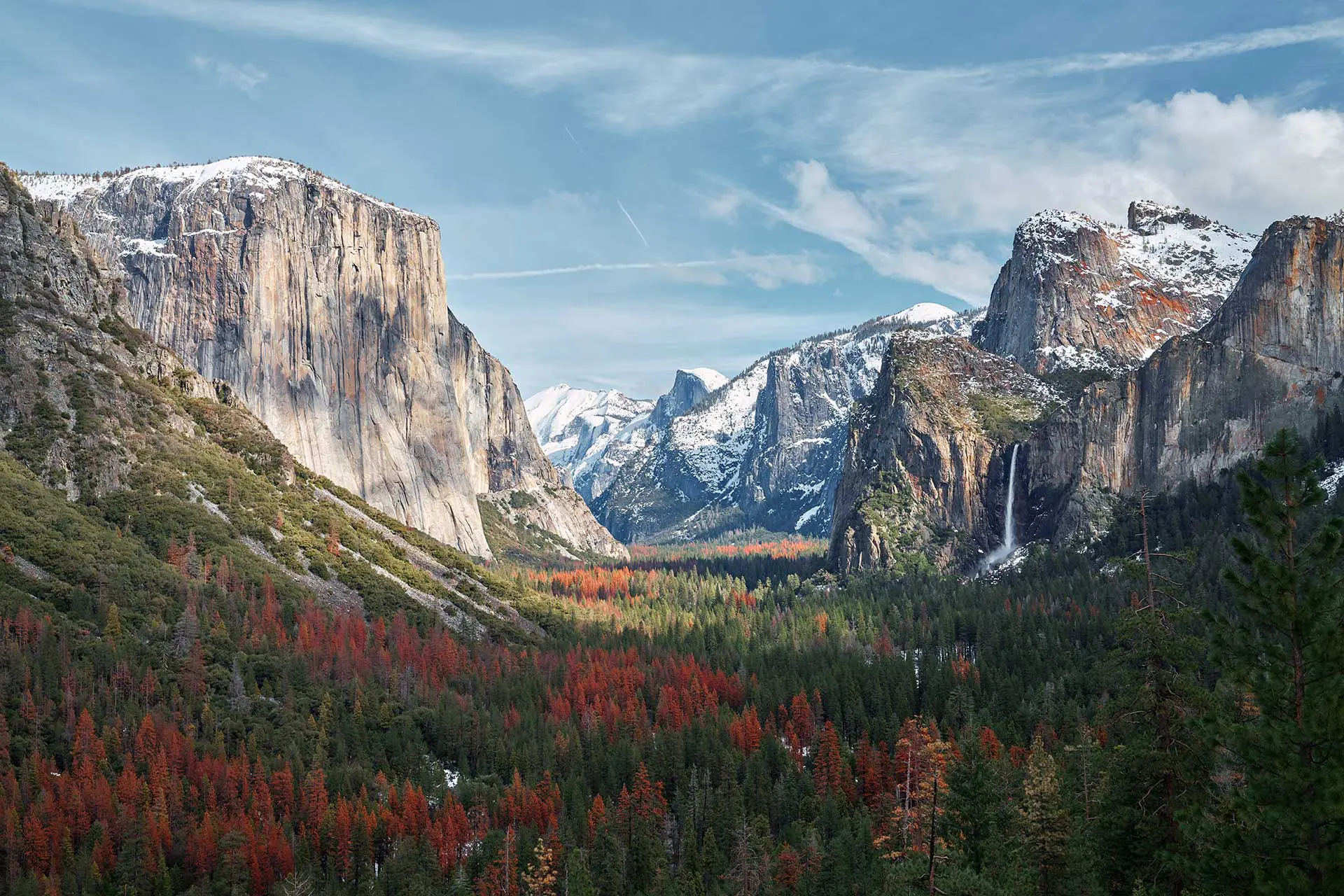
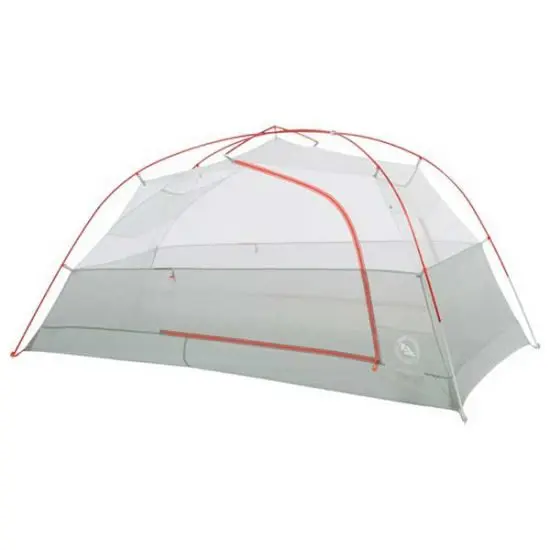
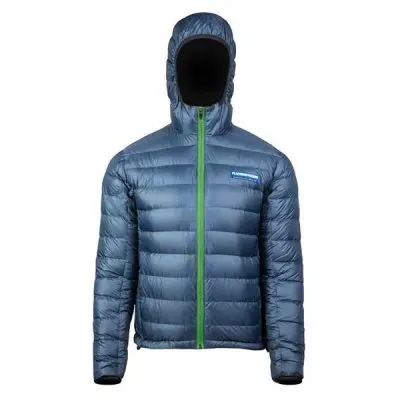
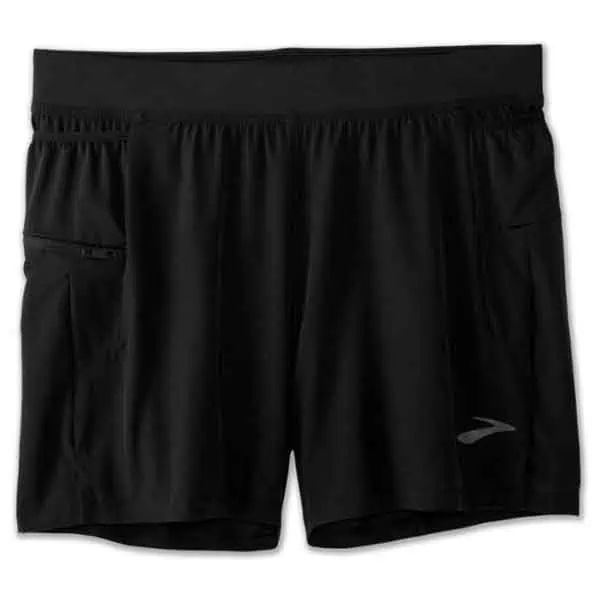


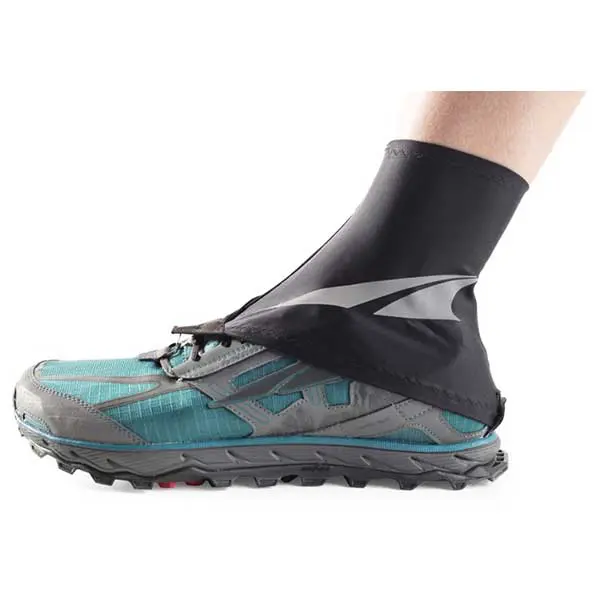
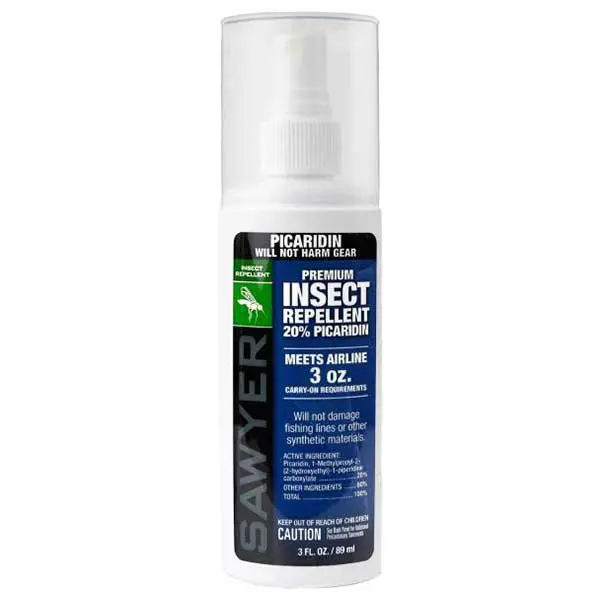
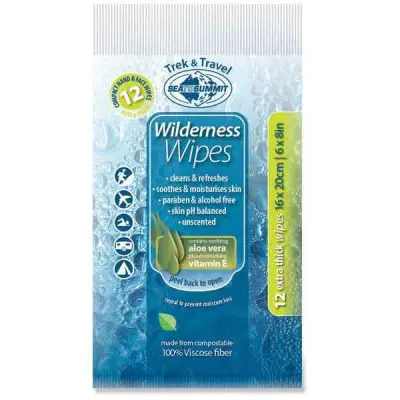
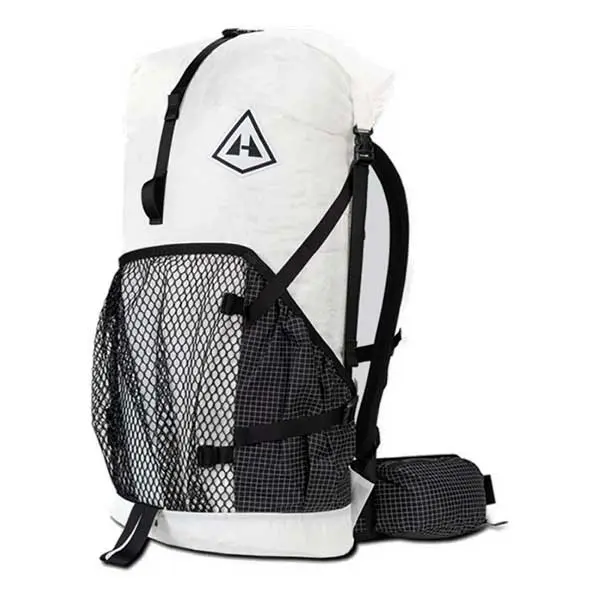
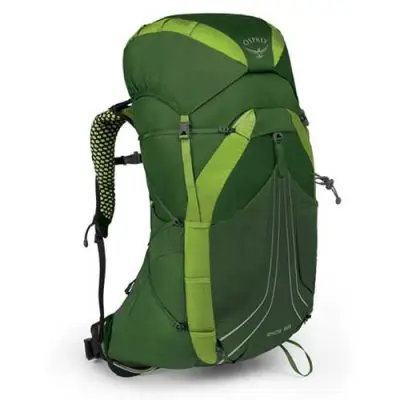
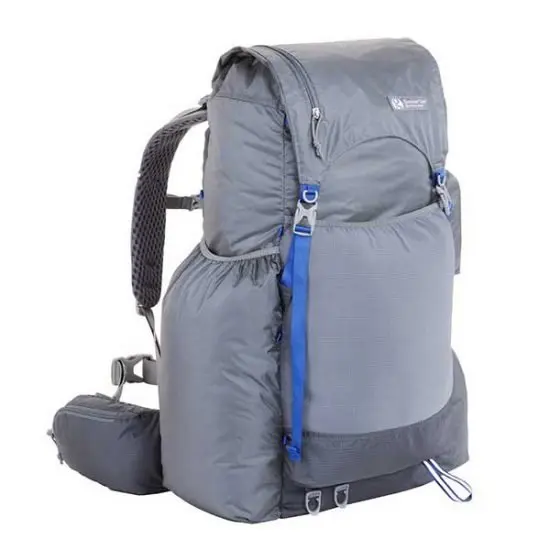
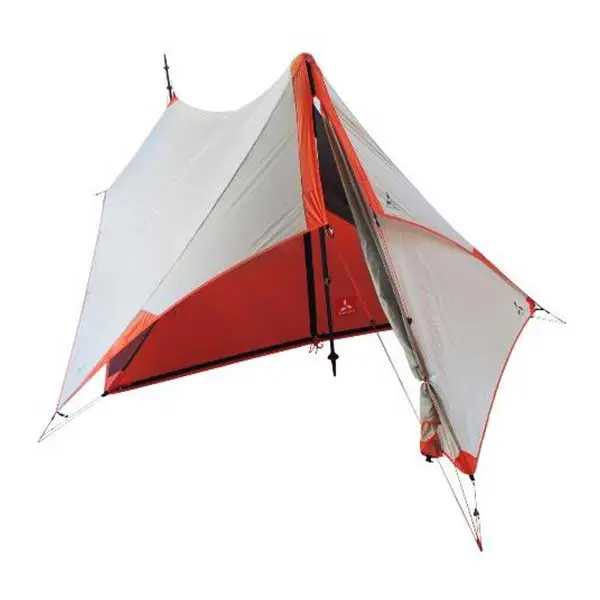
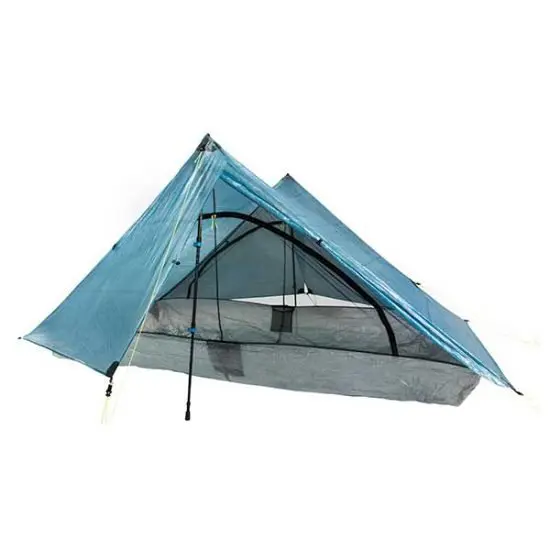
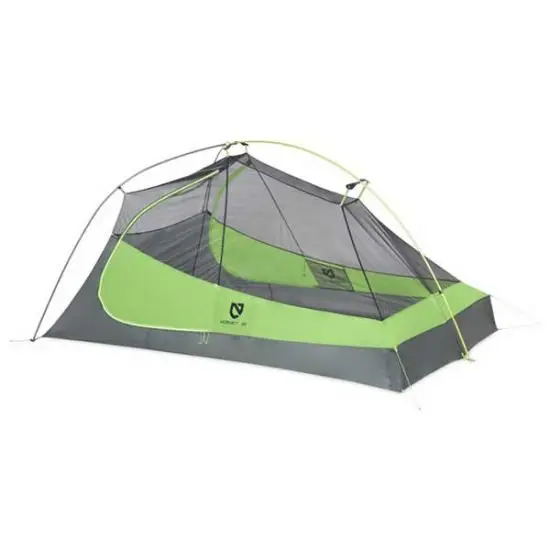
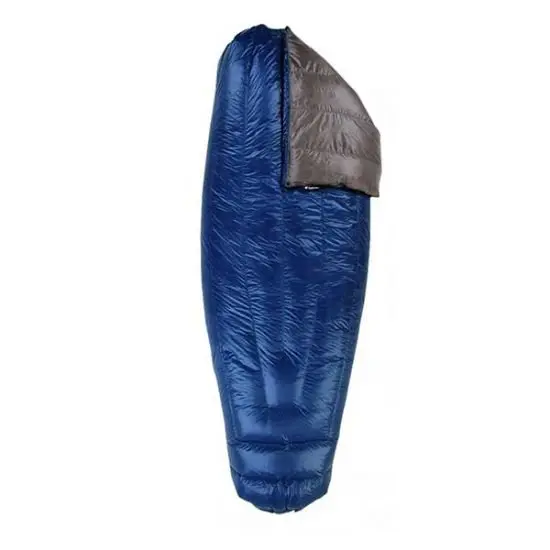
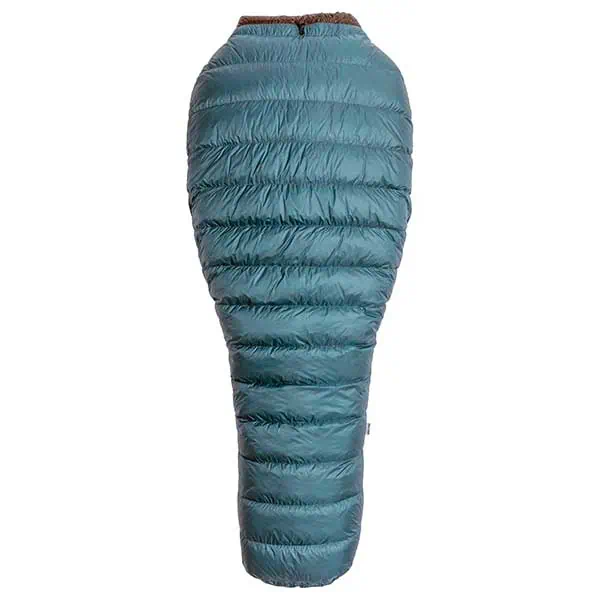
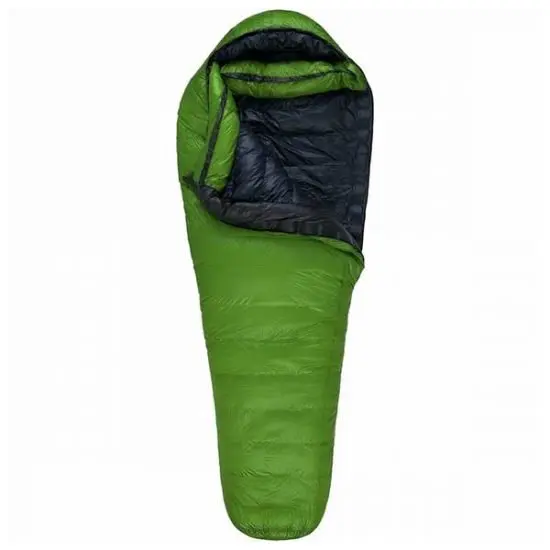
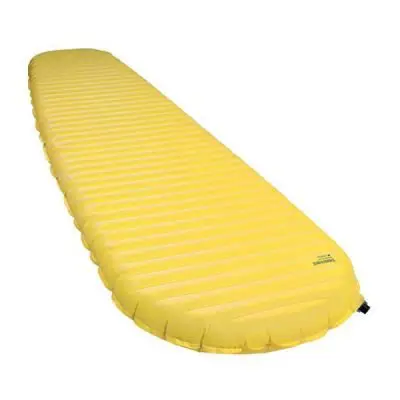
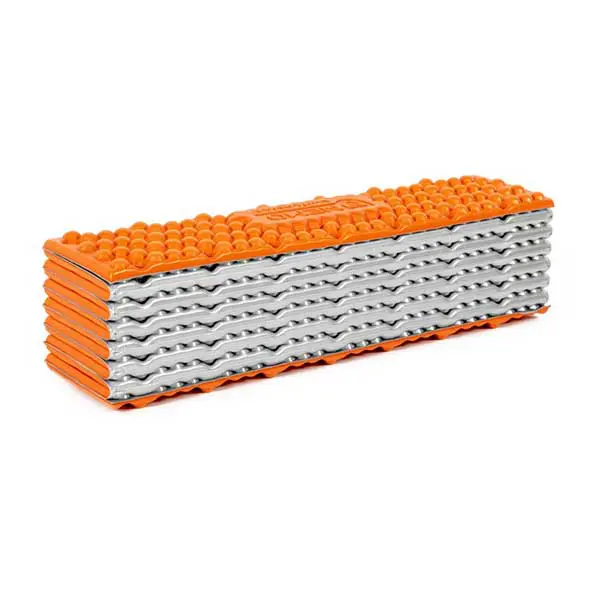
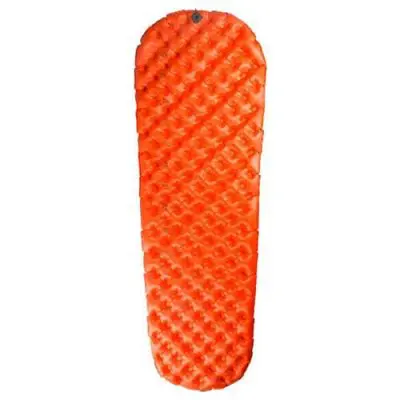
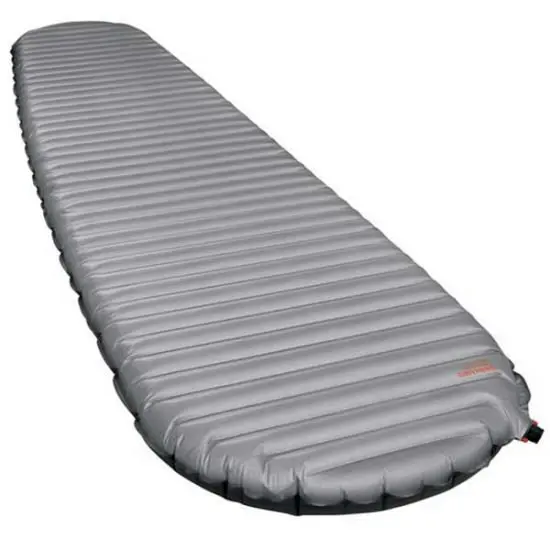
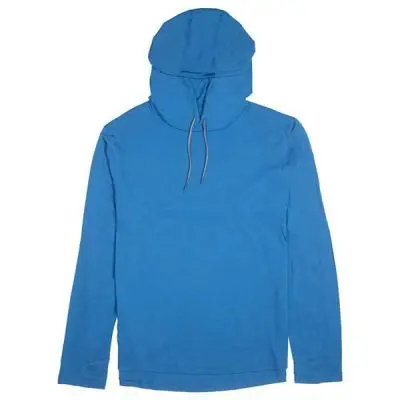
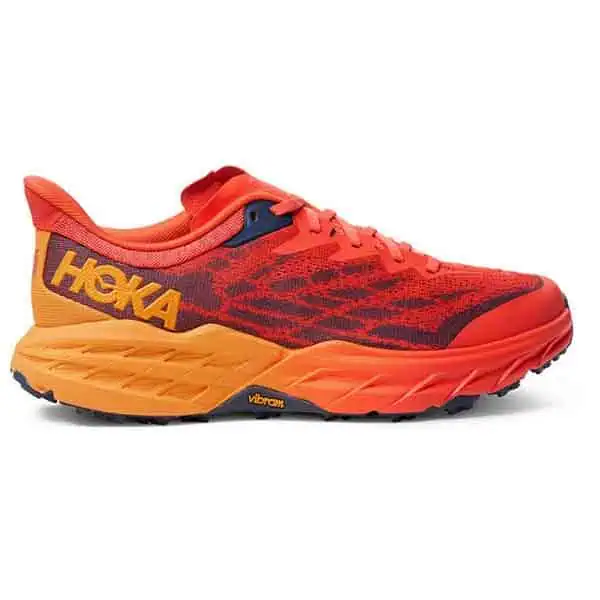
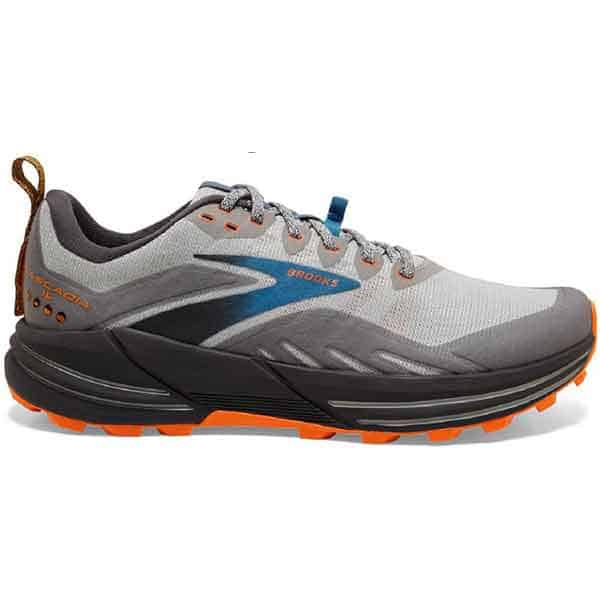
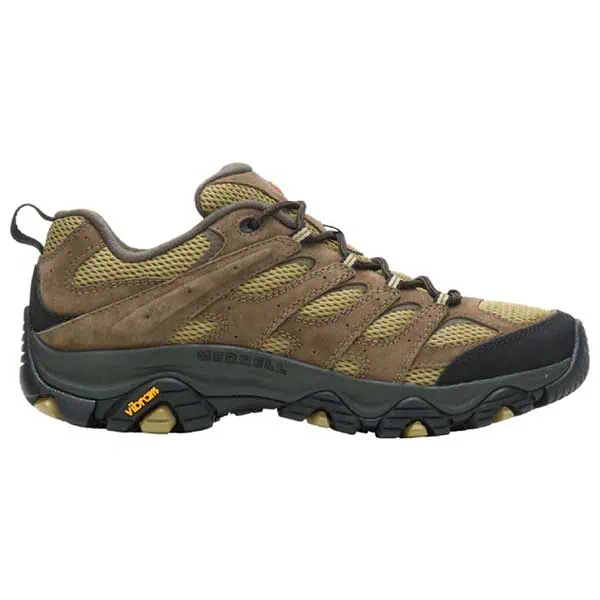

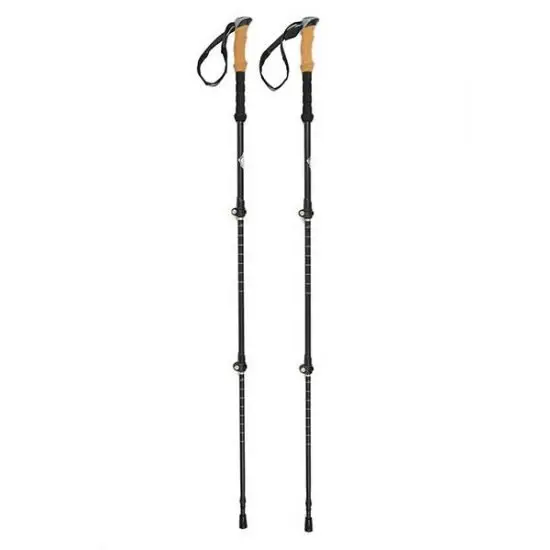
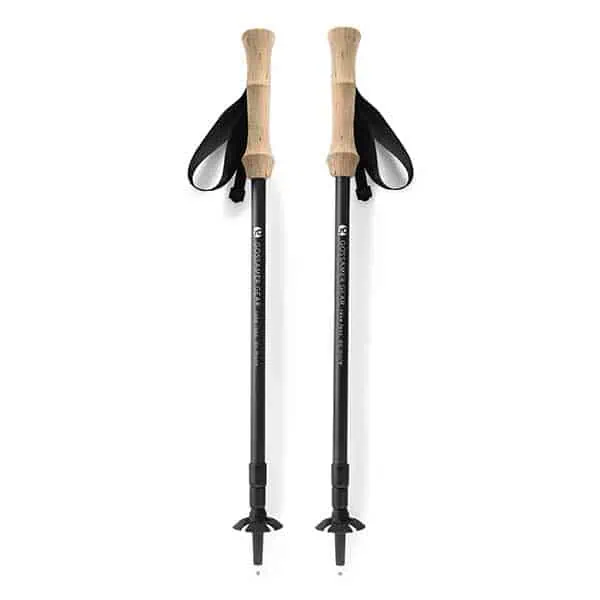
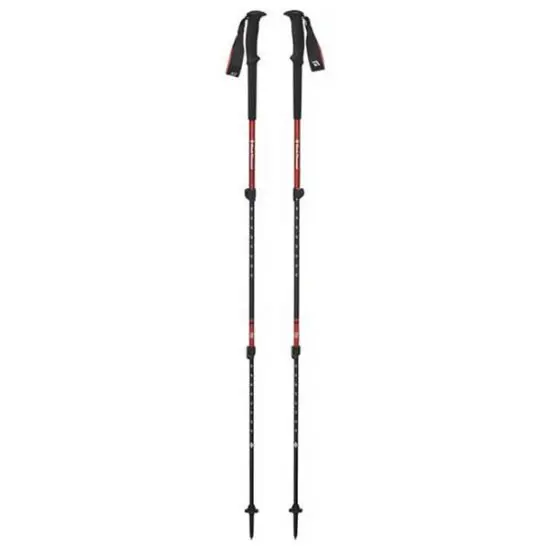

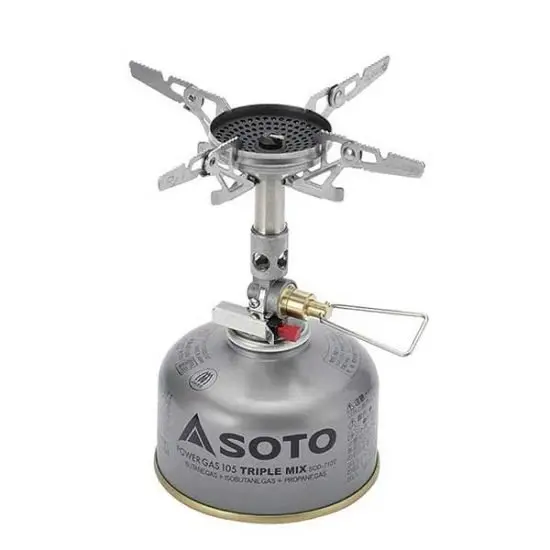
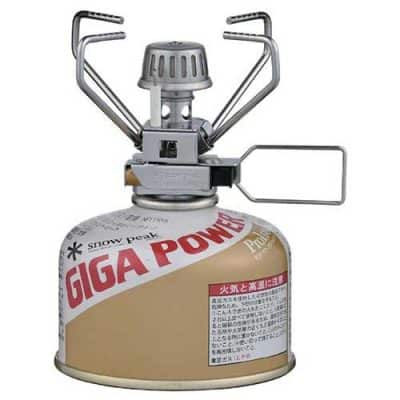
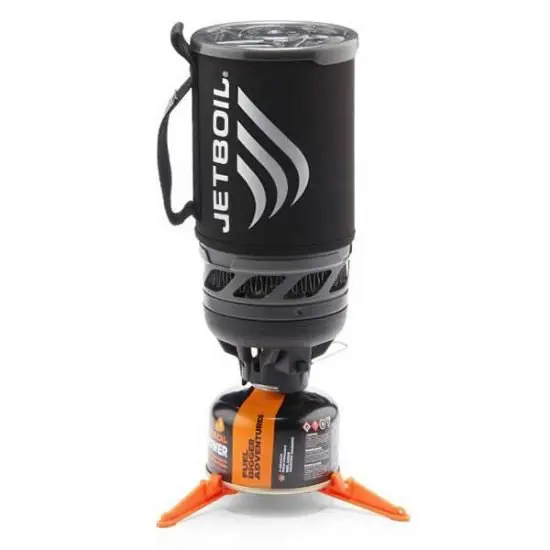
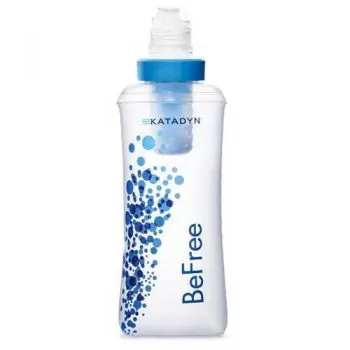
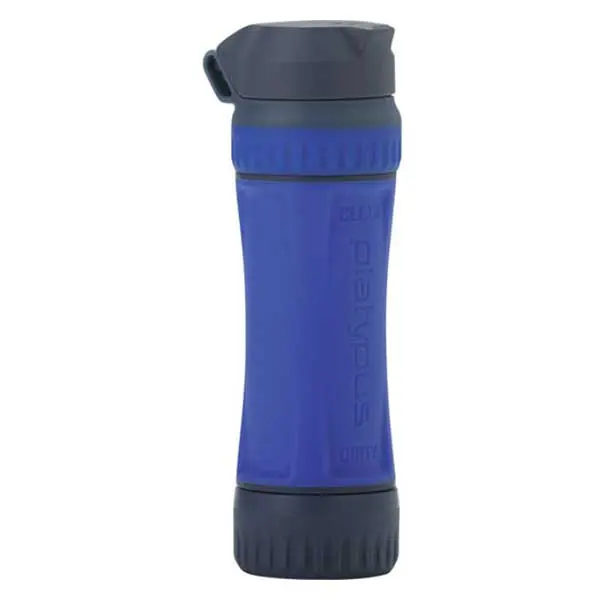
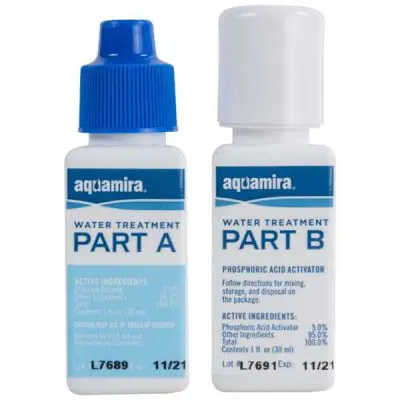
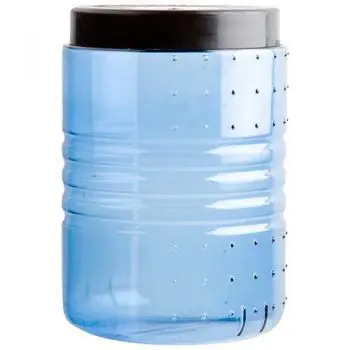

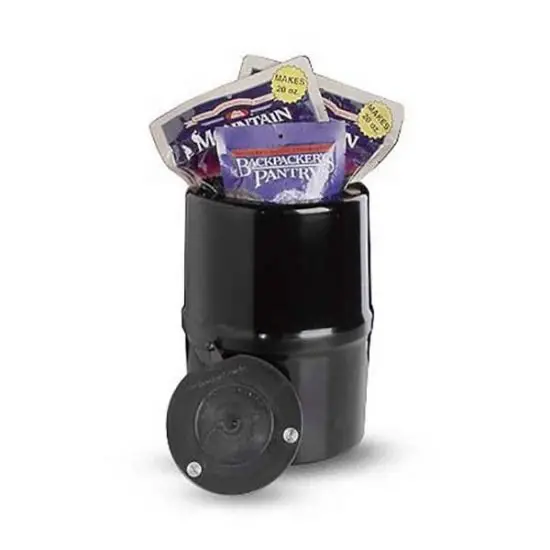
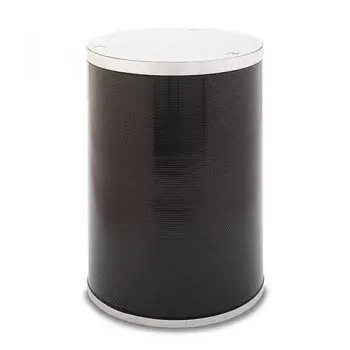

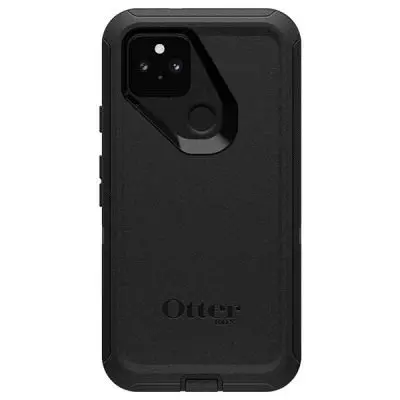
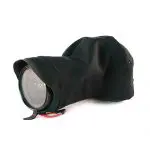
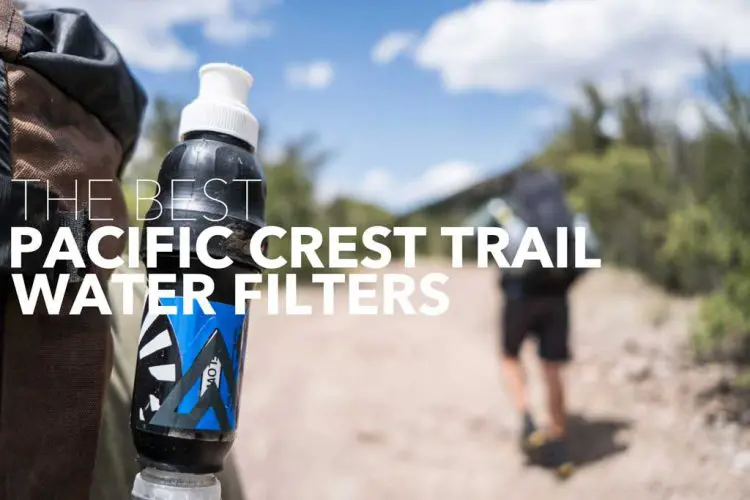
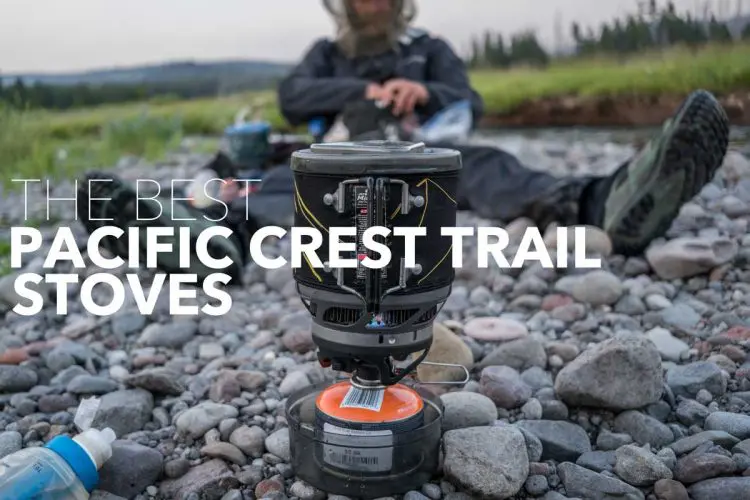


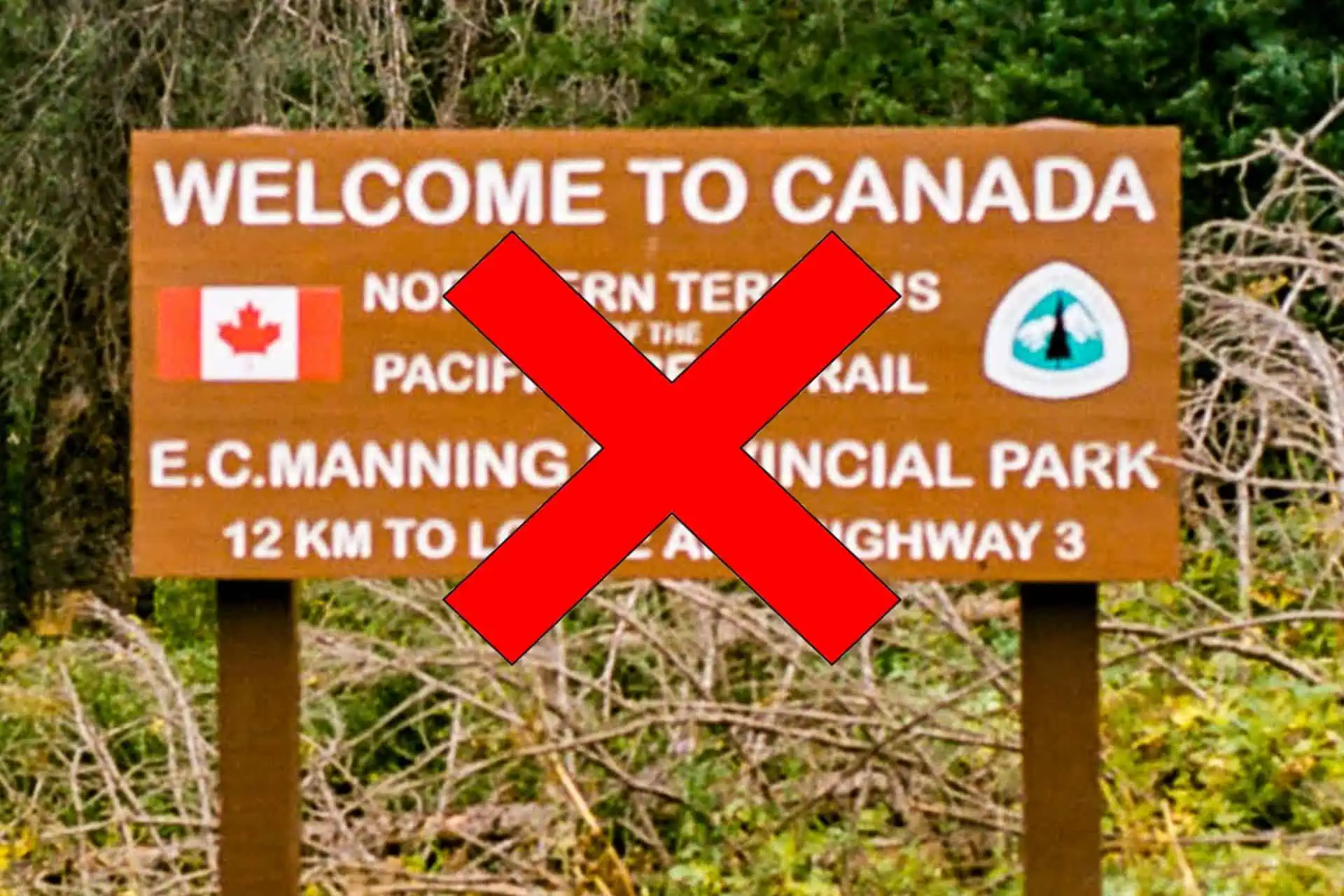
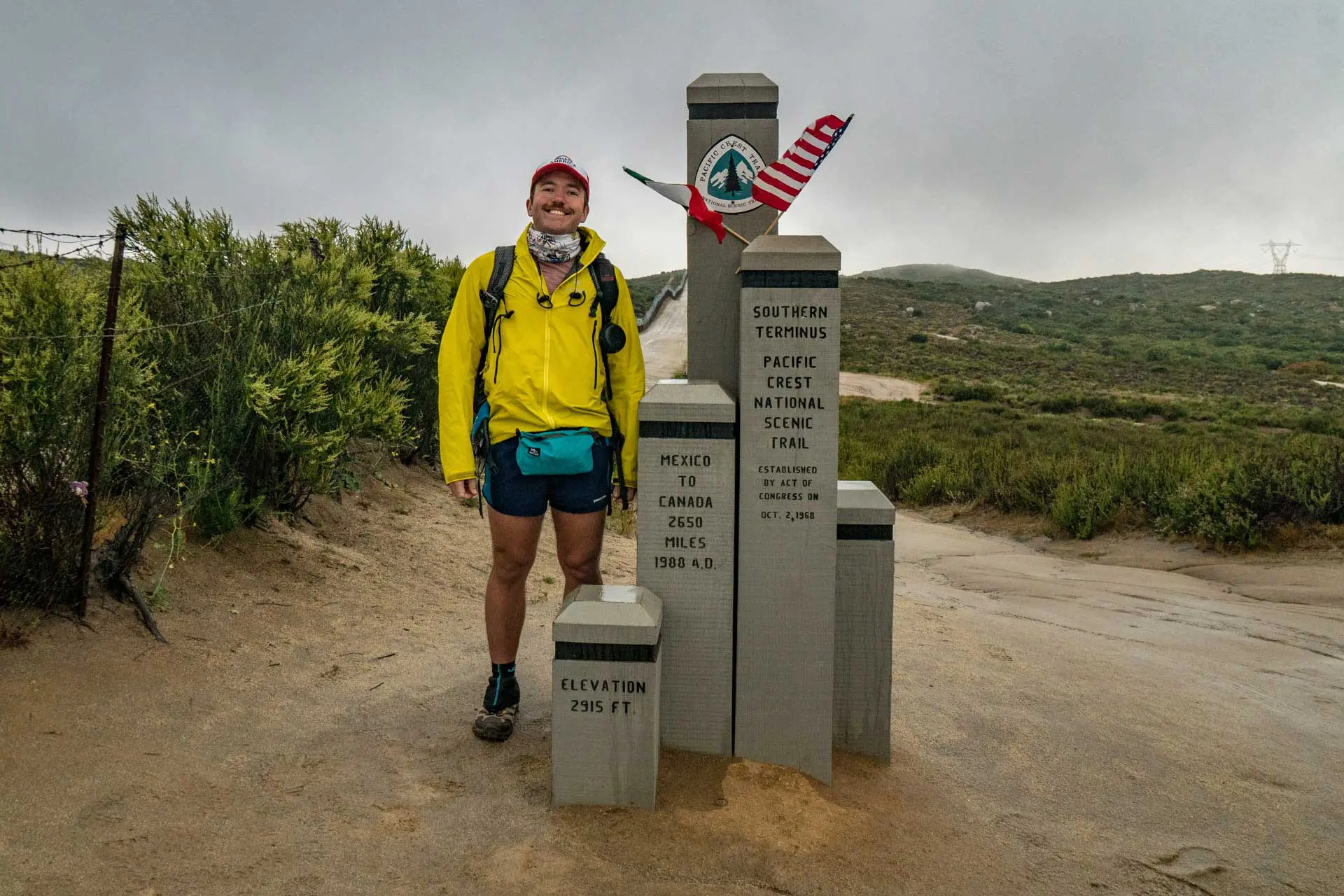
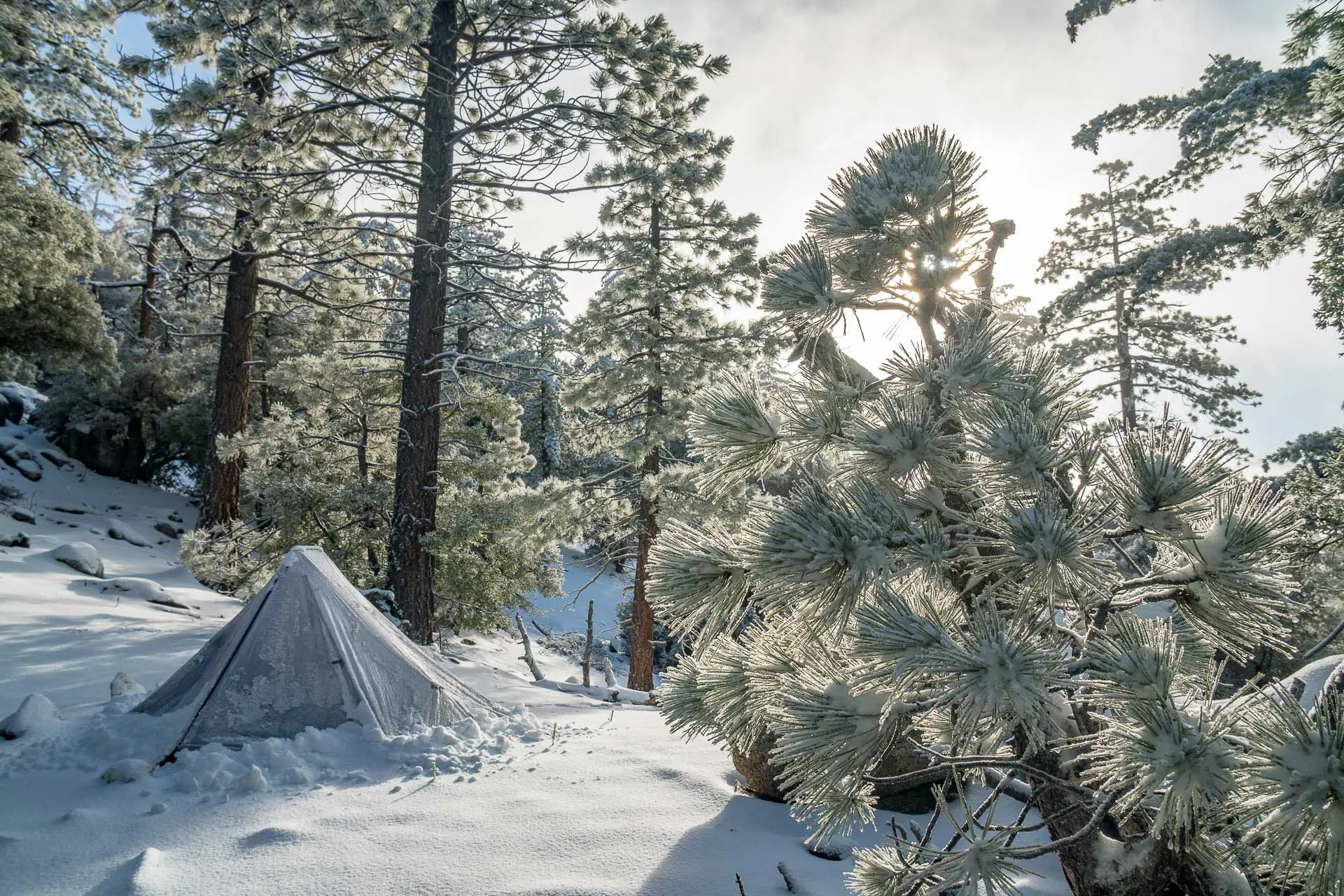
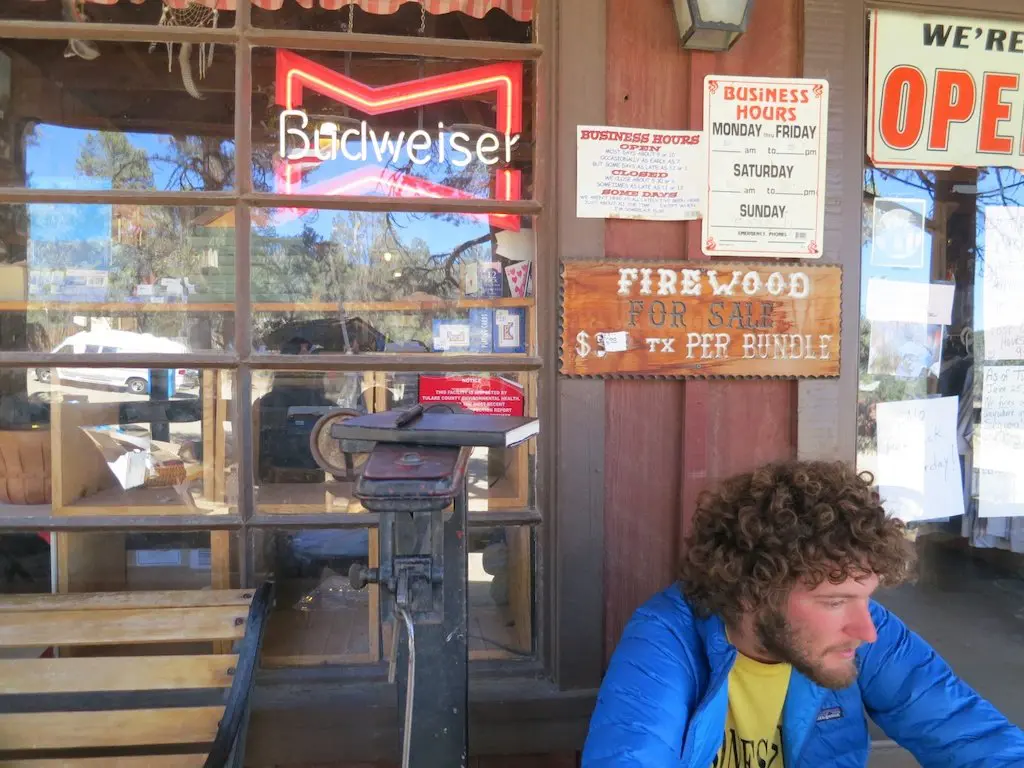
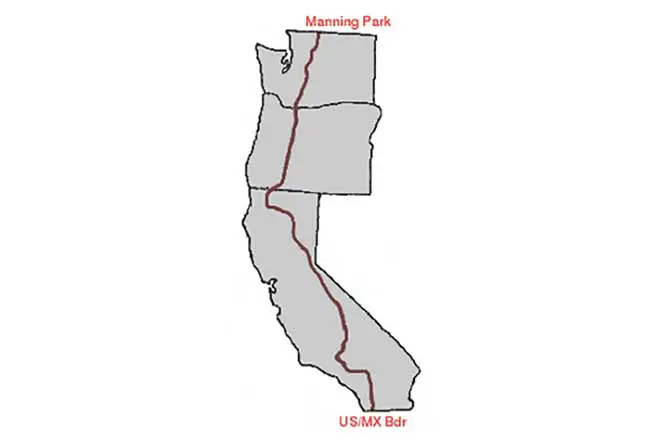
About how many changes of clothing do hikers bring on the PCT? And do they change out clothing or shoes when going from areas of hotter
temps to areas of much cooler temps?
Most hikers I know bring just a single set of clothing. Shoes generally remain the same throughout the hike (they’re typically replaced when they are falling apart or have no tread remaining).
Is a down/synthetic insulated jack absolutely necessary? I personally would much prefer to swap it out for warm fleece and use my rainjacket as an outer shell, or would this be risky?
Personally, I only use my down jacket at camp (or when doing laundry). I run hot when hiking so I don’t usually wear it except for exceptionally cold mornings and my sleeping bag is plenty warm without needing any layers. So yes, you could swap it out for a fleece if you prefer that route.
I bought the EOS down hoody last spring on closeout. (I think Feathered Friends is changing the design to make the hood adjustable.) I’m so glad I did! I cannot imagine using it while hiking because, as you said, it’s quite warm. But I put it on as soon as I start to feel a chill in camp, and on cool mornings I’ll wear it until I’m ready to start hiking. I sleep in a hammock, and the coat doubles as a pillow (if I need one – I generally don’t).
I’m tackling the PCT in sections, so I haven’t been on a months-long hike. But when the day comes, I believe this coat will still be in my kit and that it’ll come along with me. It’s that good.
Are you paid by any of these companies to promote their products?
I am not paid by any of these companies to promote any of these things.
Hi Mac! Thanks for the informative and funny post! I was wondering why you chose the ULA Circuit over the HMG Southwest? I am looking to buy a pack for the PCT for next year, but I keep going back and forth between wanting the Circuit or the HMG Southwest. Interested to hear your rationale for picking the Circuit over the HMG pack, even when you wrote a glowing review for the HMG Southwest. Thanks!
This is why I have included the other popular packs below. However, I chose the ULA Circuit as the first option because it’s the highest-reviewed pack from PCT hikers (according to the PCT Hiker Survey) and since the majority of PCT thru-hikers are on their first long-distance hike, I feel like the Circuit is less intimidating than the Southwest. When it comes down to it there is no “perfect” or “best” gear list, but there is “good gear” and “shitty gear”. Both the ULA and HMG packs are good gear. If you’re looking at both, I would suggest ordering them both, trying them on, and returning the one that doesn’t feel quite right.
I’m thinking of getting a lightweight merino hoodie for hiking in general. Do you ever overheat with vigorous hiking in the one you listed, and do you think it provides sufficient sun protection on its own? Thank you!
I have purchased but not yet used the one I listed (will be hiking the PCT Desert in it come May). However, it appears to be made similarly to the merino hoodie I have used in the past which I’ve never had any problems with.
Hey, may I ask why there are no Zpacks products included in the list, when they were a part of the survey’s most popular tents, backpacks and sleeping bags? Did you have some issues with them? Thanks
Zpacks was part of the most commonly used items, not the highest rated/favorite items used by hikers. There have been lots of complaints from hikers about Zpacks quality (particularly with their packs). Based on the ratings Zpacks equipment receives from hikers and the feedback I’ve received, Zpacks products are not currently something I feel comfortable recommending.
Thanks for the reply, I guess for a similar reason also no Enlightened equipment quilts are shown.
I think its a good idea to recommend hikers the best and the most highly rated products, but I think it is also good to clarify when the recommendations are personal suggestions, and when they are a representation of the data collected from the survey.
There wasn’t a section for quilts in the survey.
EE quilts are both popular AND recommended by most every review I have seen. YMMV
where do you get the 4.7kg baseweight from this list? added up (not including shoes/trekking poles) is already 5.9kg.
Post has been updated – hopefully you like the maths better now :)
Hi, I have a question about packing your backpack. I am thinking about getting the Circuit, and have the same tent you have. Do you pack your tent inside the pack? Then how do you pack everything around the bear can?
I generally pack my tent inside my pack in separate pieces (fly/body/footprint) and then pack my poles and stakes in one of my side pockets.
ok…..i failed to extract the worn stuff. but poles, headlamp?
and by the way, not trying to be nit-f-ing-picky.
love the blog. you do some great work and are at least partially responsible for my plans to thru-hike the PCT in 2020. got a few things to take care of between here and there, but i’m anxious the return to the outdoors after 30 some years. used to get out monthly in wisco as a kid, winter summer and fall.
mac-
i added up your “detailed view” list of stuff (which leaves out some stuff) and i get 240.12 oz…or 15.007 pounds. that’s more than your suggested weight of 10.47 pounds. what up?
Mac, only one long sleeve merino hooded shirt, no separate dry shirt for the camp or the night?
Why do you need a separate shirt for camp or night?
the shirt is wet and smelly once reaching camp. by the same rational, I have a second pair of socks and undies. I am glad to put on a dry shirt under the down hoody or in the sleeping bag. Would be interested, how you organize with only one shirt.
If you’re happy carrying an extra shirt, carry an extra shirt :)
Personally, I wear my puffy if I’m cold at camp and I take my shirt off to sleep (hopefully, it dries during the night if it’s wet). If my shirt gets really nasty I’ll rinse it in a stream or something if I can, but usually I just wear it until town and then wash it (and wear my rain jacket around while I’m doing laundry).
actually, I am not happy to carry anything at all :). that’s why I am hanging around your and similar websites. I might give the 1-shirt-strategy a try on a short trip.
Just remember that the PCT is simply a bunch of short trips done in succession :)
I noticed you say you kept your food in the sea to summit bags (outside of Yosemite) but you don’t have any rope on your gear list. Did you hang your food bag? If so, how? If not, what did you do with it?
Slept with it.
Lot of chatter this year about mice in WA. Did you have problems? I know its not on your survey, but wondering how many thought hanging was easy and good enough vs. sleeping with it vs. Ursack Minor? -Thanks
I had some problems with rodents, and ended up hanging my food a lot. However, now I just have an Ursack that I bring everywhere.
is ursack over bear can in the sierras a viable option? or does that section require a bear can regardless?
The PCT requires a bear can.
Only in certain areas.
Hi Mac. I appreciate the down to earth advice you’ve given in your blog. Especially the dying on the trail bit haha. I was curious what you did for leg wear in the snow. Did you just stick with shorts?
On the PCT I did not encounter any snow, but on the CDT I just stuck with shorts through the snow. However, I also used a pair of snow gaiters.
Ok shoes, Question ?
Merril moabs!! so what wen you walk to rain and wet vegatation for a few days ? i guess it means you have really wet feet al day for several days,.. what will do that to your feet. ?
I have to ask because i walk by default on Lowa GTX Combat Boots and as long as i do not step into a deep river for more then 10 seconds my feet stay dry. ( LDW,s in Scotland and England ) the weight is a thing but i am willing to try out those merrils. But it is hard to wrap your mind around it wen you are used to those heavy boots who kept your feet dry for loads of miles.
” mentaly preparing for PCT in 2019 and tweaking my gear ”
– My tent wil be a MSR got a Hubba Hubba NX or i switch to a MSR freelite
– Sleeping thingy – Lightwave Firelight 550 ( you can compare it to yours )
– Neoair sleeping bla bla
– Backpack i tried some extra light packs but the comfort of my Osprey Aether is of the chart compaired to those.
Most of my clothing will be a combination of Icebreaker and ArcTyrex ( love that stuff )
I never walk uncoverd so no shorts for me ( damn bugs) ;)
I always use X-Socks but i will buy a set of darns and try them out..
Wish you good times with hiker trash and the bears on your CDT Mac ;)
Freddy
When walking through wet vegetation my feet get soaked, but waterproof shoes/boots aren’t popular for thru-hiking because they generally don’t breathe very well.
Ok Mac got myself some Merrels will test them out on a 80 Km weekend trip next month to see how they hold up and see if my feet are liking it or not.
I’m still a big fan. Currently on my third pair towards the end of my Continental Divide Trail thru-hike.
I agree with breathable boots over waterproof boots. There are far more days when your feet will appreciate breathability than waterproof.
I have hiked in goretex shoes and they do keep my feet dry – up to a point. If the environment is wet enough, my feet get wet. So I’ve found only a small-ish range where they are beneficial.
The other option is goretex socks (Sealskin). I used these last summer in Alaska where I was often walking in shallow water. My feet stayed mostly dry and reasonably comfortable. Since I don’t like wet feet, I might bring a pair on a thru hike and certainly would bring them for hiking thru snowy mountains.
Hi, Mac
The Merrell Moab Ventilators are drying up (most sizes unavailable from most stores).
Anything else to suggest for wide feet?
Sorry I never got back to this, but what I wear not is the Moab Ventilator 2!
It would be nice to see what you will use/drop for various sections.
Working on additional lists with this information :)
Mac, only shorts, no long pants or rain pants?
I gave up on rain pants since they just make me sweat uncontrollably. Shorts in the rain is my current go-to.
Do you use GPS or an APP on your phone or did you carry maps.
I carried Halfmile’s maps.
Interesting. I’m old, I mean I’m old school!
Paper maps are what I would like to use. How did you manage the maps? Did you carry all of them at once? Did you resupply yourself with just the next sections set of maps?
Just how thick is a full set of Halfmiles Maps? (trying to get a sense of size and weight).
I also noticed you did not list a med kit. No med kits at all? I am impressed for sure.
BTW: OUTSTANDING information Mac. Very beneficial.
I sent myself bunches of maps to different points along the trail – usually three or four hundred miles at a time. And yes, my medical kit dwindled to nothing on the PCT, but now I carry a couple of waterproof band-aids and some antibiotic cream.
I have been reading the PCT section of this blog for a while now and it has been fantastic to read. Your countless link after link of pages on the topic has led me to read for hours and hours. As a keen hiker myself I have always been looking for a long distance trail to complete during my gap year, and this blog has 100% convinced me to hike the PCT. A quick question: do you ever think you will return to the PCT in order to thru hike it again? Anyway once again I thank you for this blog and the hours of fun it has provided for me when I read it.
Sorry for never getting back to you on this! But to answer your question, yes, I would probably consider thru-hiking the PCT again one year.
No pants, leggings for colder temps?
No need for a long sleeve shirt?
Mornings can be brisk, but once you’re hiking I never found it to be cold enough to warrant pants/leggings (even in the rain). Long sleeve shirts are nice for bugs and sun protection. I guess I run hot.
Consider getting a water bladder with a hose, cutting the hose in half, and plugging a sawyer mini in the middle for a gravity filtration system instead. I converted to that system in the Sierra after glaring enviously at my hiking buddy for 100 miles who was doing the same thing. I love it so much, I can just chill and let gravity do all the work, no more squeezing.
If there isn’t any branch suitable to hang the bladder on you can just use your Trekking poles.
I will have to investigate this. Thanks for the suggestion!
I would really like to see a detailed pros and cons of this system vs traditional gravity system (dirty bladder to clean bladder). The Sawyer website is really the only place I’ve seen this inline system mentioned before and I have wondered at its practical application.
planning to go in 2016 after reading your blog!
2016? You had better get started!
Awesome list as usual, thanks for the updated gear picks. I’m an aspiring PCT thru hiker and wondering about the power bank. How difficult is it to charge in town? Do you have to be stealthy at the gas station or is it pretty easy to find generous souls to let you ciphen off some juice? This seems like the best options but I’m having visions of being chased off the premises for plugging in . . . paranoia or real thing? Hope you’re enjoying you little bike ride!
It’s not tough to charge in town. The worst thing about charging a power bank is that you need to wait a bit for it to charge (typically overnight). Finding an outlet to steal power out of was never a problem for me.